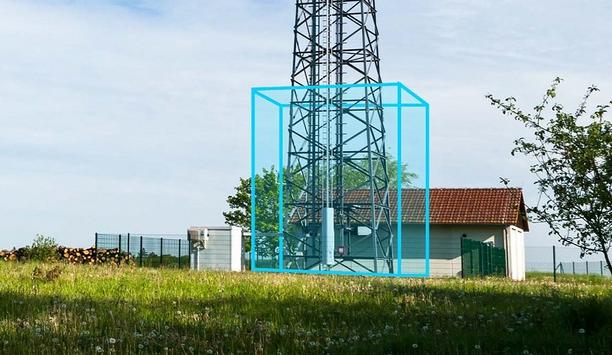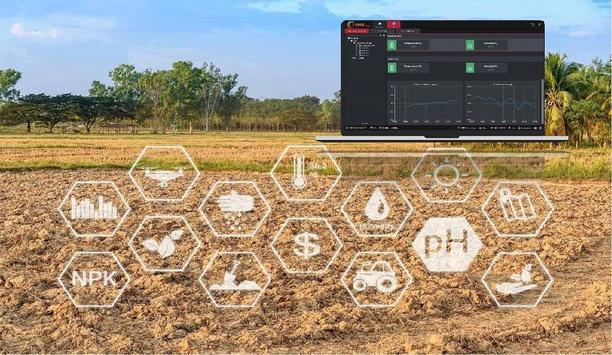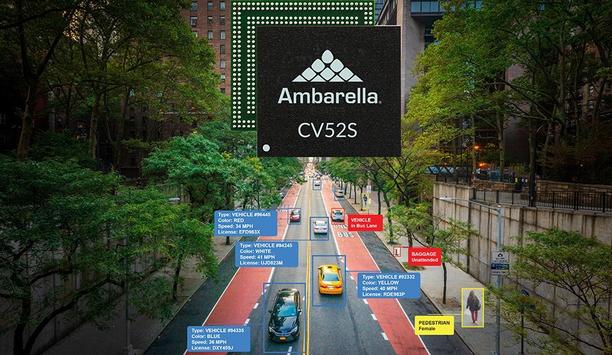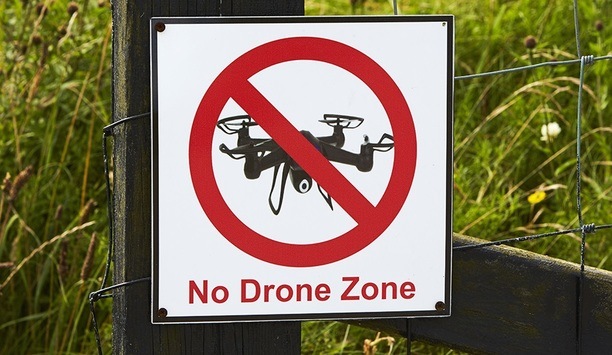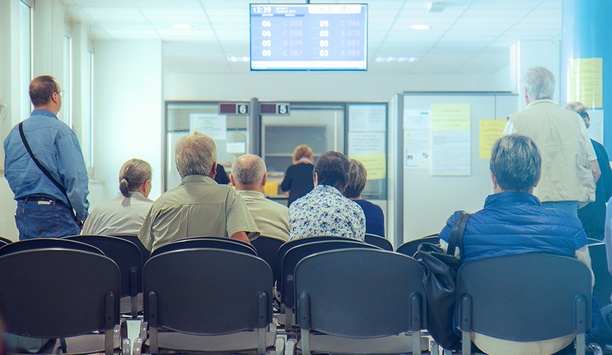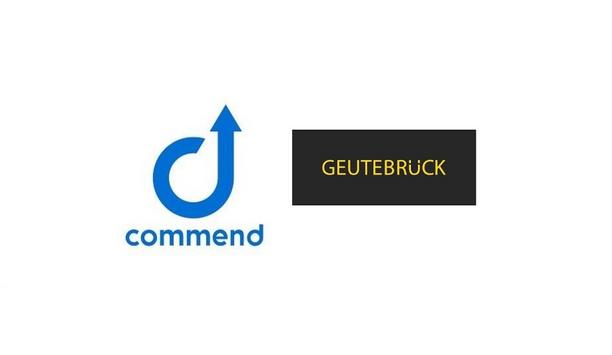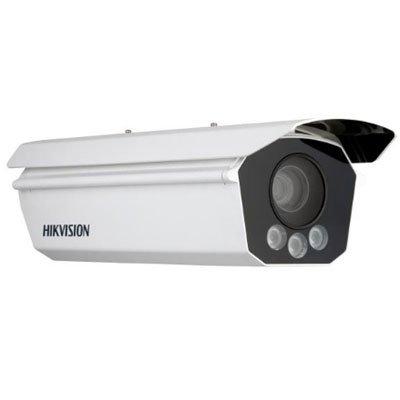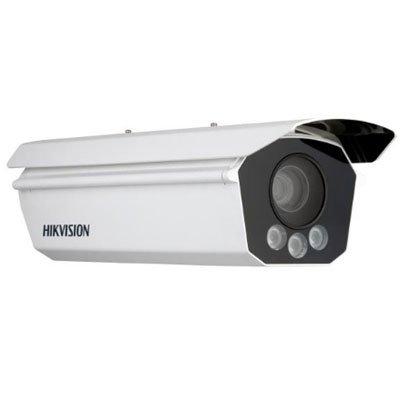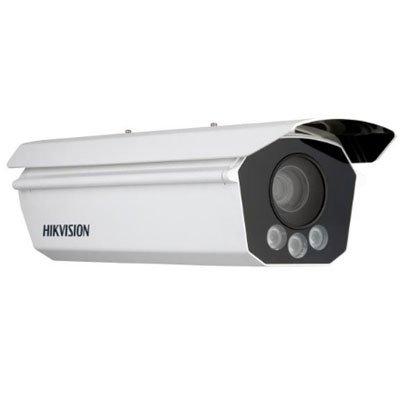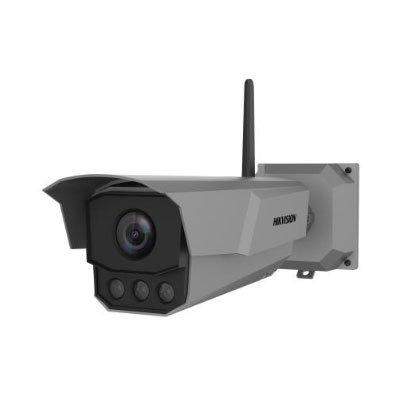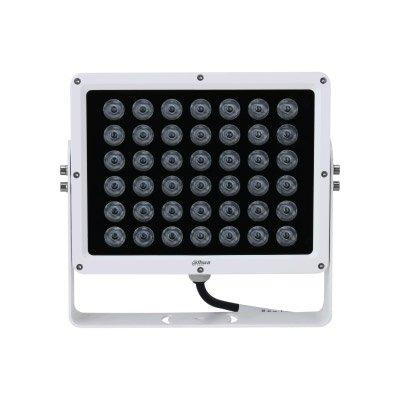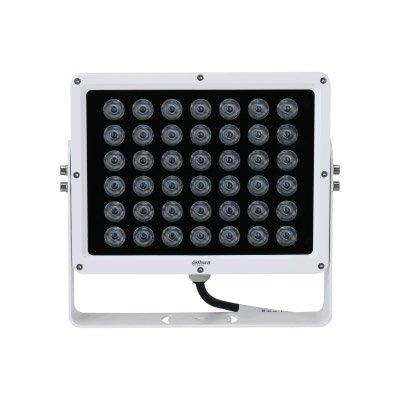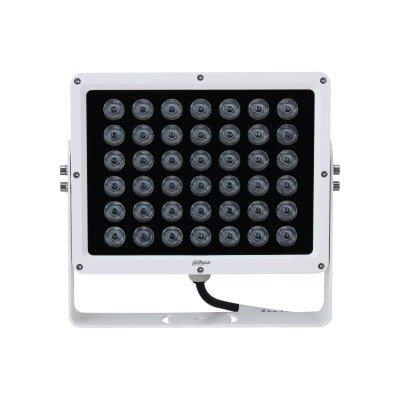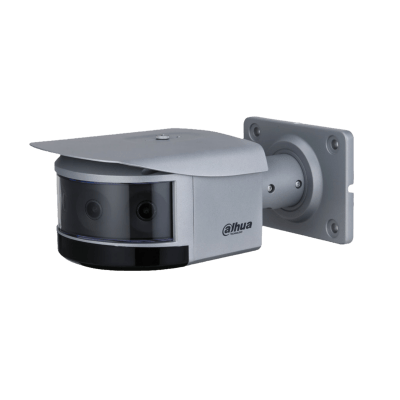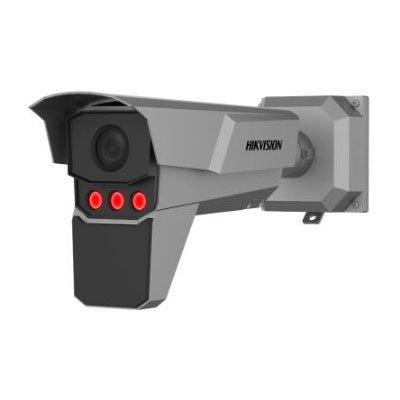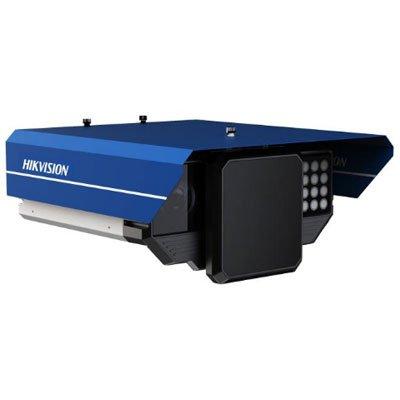Traffic surveillance
LiDAR, which stands for Light Detection and Ranging, is a technology pervading many different industries. One of the biggest examples is driverless cars. LiDAR can help a vehicle understand and respond to the changing environment around it. An increasing number of car manufacturers are introducing LiDAR-based systems, such as Volvo's EX90 fully electric SUV, to help keep the vehicle a safe distance from other traffic and obstacles in the road ahead. Bathymetric surveys The technology h...
Aesthetic options, in addition to robust security features, are increasingly important to architectural door openings. Adams Rite delivers, expanding its finish offerings for the 8800 Series Starwheel Rim Exit Devices to include Black Suede Powder (BSP). 8800 Rim Exit Devices Adams Rite 8800 Rim Exit Devices offers reliable security, durable construction, and streamlined design for narrow stile aluminum doors. Its unique Starwheel bolt interlocks door to frame to provide enhanced...
Alibaba Cloud, the digital technology and intelligence backbone of Alibaba Group, has been named a Pioneer in the 2024 Gartner® Magic Quadrant™ for Cloud Database Management Systems (DBMS) for the fifth year in a row. Evaluation criteria Gartner evaluates cloud DBMS vendors based on their Ability to Execute and Completeness of Vision, with criteria across 15 critical areas, including product or service, customer experience, market understanding, offering (product) strategy, and innov...
Axis Communications, a pioneer in network video, has announced the release of two purpose-tuned cameras ideal for traffic surveillance and smart city initiatives. These powerful cameras can capture sharp licence plate images 24/7 and help law enforcement agencies improve road safety and gather valuable intelligence. AXIS Licence Plate Verifier AXIS Q1800-LE-3 is an all-in-one licence plate kit that includes everything in one device AXIS Q1800-LE Licence Plate Camera is preconfigured for accu...
GroupBy Inc., a SaaS-based eCommerce search and product discovery pioneer, has partnered with adCAPTCHA, a cutting-edge security verification platform to elevate digital customer experiences by combining robust security measures with highly personalised product discovery shopping experiences. Bots Bots pose a significant threat to eCommerce businesses, accounting for half of global web traffic and costing millions of dollars daily in fraudulent activity. These malicious bots can manipulate se...
360 Vision Technology, the pioneering UK CCTV camera manufacturer, will be displaying their latest range of Pan, Tilt & Zoom (PTZ) Predator Ultra surveillance camera, including stainless-steel and radar versions, at Highways UK, taking place at the NEC, 16-17th October. Exhibiting on Stand 2, Hall 5, 360 Vision Technology will be demonstrating how their HD PTZ, wireless TX and IP 68 rated, 316L grade stainless steel cameras can be used to provide reliable, high-quality monitoring for road s...
News
AI in video surveillance is transforming how businesses approach security. Bosch Building Technologies is investing in proactive and intelligent solutions for security and business optimisation supporting secure environments in and around buildings, perimetres, and traffic. The increasing importance of video data for security applications and beyond drives the trend of connecting cameras to the cloud. Cloud technology Cloud technology offers benefits such as scalability, cost-efficiency, and centralised management. The partnership between Bosch Building Technologies and Eagle Eye Networks aims to provide an intelligent solution that supports businesses to work more efficiently and make the world a safer place. Smart, simple, and secure Eagle Eye Cloud VMS addresses customers’ security needs with infinite scalability, flexible pricing plans Eagle Eye’s true cloud solutions are known to be smart, simple, and secure. Purpose-built for the cloud and AI, the Eagle Eye Cloud VMS addresses customers’ security needs with infinite scalability, flexible pricing plans, a wide array of advanced analytics, and an open RESTful API platform for developers to easily create applications leveraging and integrating cloud video surveillance. AI-enabled cameras Bosch Building Technologies offers a wide range of AI-enabled fixed, moving, specialty, and robust cameras that deliver the right levels of data and evidence, are secure and cyber-resistant, and are easy to deploy. Bosch’s application-specific video analytics at the edge performs real-time video processing to automatically generate metadata descriptions of events. Situational awareness and control The integration of Bosch cameras with built-in Video Analytics and the Eagle Eye Cloud VMS provides users with advanced notifications of potential security risks, enhancing situational awareness and ensuring control from anywhere. Visual data generated by Bosch cameras is highly accurate and reliable, supporting smart decisions and proactive responses to minimise risk and potential damages. Edge-based, application-specific analytics Eagle Eye Cloud VMS allows detailed video access through the cloud, with continuous recording Video cameras can act as sensors thanks to edge-based, application-specific analytics, helping secure perimetres, increase safety in or around buildings, and collect data for decision-making. The Eagle Eye Cloud VMS allows detailed video access through the cloud, with options for event-based or continuous recording, and storage retention ranging from 7 days to 5 years. Scalable solution This integrated solution is scalable, facilitating rapid deployment in bandwidth-limited areas, and features an AI-powered Smart Video Search, enabling users to search for a person, vehicle, or object across multiple cameras and sites, returning accurate results immediately. “We are an open camera player with multiple software partners, and we are delighted to add Eagle Eye Networks as a partner to further extend our cloud-related offerings to our customers, benefiting them with our differentiating camera technologies,” said Michael Seiter, Senior Vice President of Bosch Video Systems and Solutions. Edge and cloud partnership “Just like our outstanding partnerships with other pioneering solution providers, we look forward to creating key differentiators in this powerful edge and cloud partnership,” concluded Michael. “We are extremely pleased that Bosch Building Technologies has invited Eagle Eye Networks to become a technology partner and look forward to delivering exceptional cloud and edge solutions that solve business problems and deliver value to our global customers,” said Dean Drako, Founder and CEO of Eagle Eye Networks.
Hanwha Vision, the global vision solution provider, has unveiled its new high-performance bi-spectrum radiometric thermal AI cameras, which are ideal for use in perimeter protection, traffic monitoring, manufacturing, industrial facilities, data centres, solar farms, and more. TNM-C3620TDR/C3622TDR cameras The TNM-C3620TDR/C3622TDR cameras serve as compact indoor models and feature QVGA resolution on the thermal lens and 2MP on the visible sensor, while the TNM-C4940TDR/C4942TDR outdoor models combine advanced VGA thermal and 4K video. The range is designed to deliver clear images in all lighting scenarios, with AI-powered analytics for accurate object detection, and temperature monitoring between -20°C and 130°C. AI for greater accuracy With the outdoor models supporting AI on thermal and visible sensors, they can detect objects in difficult lighting With the outdoor models supporting AI on thermal and visible sensors, they can not only detect objects in difficult lighting conditions, such as complete darkness, fog, or rain, but also alert operators to potential intrusion, loitering, or other suspicious behaviours. Meanwhile, the compact indoor models feature AI on the visible channel. Operational efficiency By ensuring a high degree of accuracy across the range, false alarms triggered by irrelevant motion, for example, wildlife or shadows, are significantly reduced, improving operational efficiency and meaning operators focus only on genuine events. Intelligent video analytics also include enter/exit monitoring and virtual line-crossing detection. Precise temperature monitoring The bi-spectrum radiometric thermal AI cameras offer precise temperature measurements between -20°C and 130°C, making them ideal for industrial applications. By providing critical data on temperature changes, the cameras can alert operators to potential issues such as overheating parts or equipment failure, minimising downtime, enabling proactive maintenance, and enhancing operational efficiency and safety. Operators can toggle between eight colour palettes on the thermal channel, to easily review any temperature changes and enhance the visibility of a scene. Perimeter protection and traffic management The cameras can also be used for traffic monitoring, alerting to stopped traffic that may signal a road accident In particular, the outdoor models are well suited to perimeter protection and can alert operators to potential boundary breaches. The thermal lens can identify potential perimeter breaches across sites by detecting body heat signatures, while the visual lens identifies and classifies objects. The cameras can also be used for traffic monitoring, alerting to stopped traffic that may signal a road accident or congestion. The cameras enable a high degree of accuracy and fewer false alarms. Flexible options The TNM-C3622TDR (indoor model) and TNM-C4942TDR (outdoor model) operate at 8fps on the thermal sensor and therefore are excluded from the Wassenaar Arrangement, an export control regime that governs sensitive goods including cameras with frame rates over 9fps. This makes exporting and importing them simpler and, as such, results in shorter lead times.
Current UK Managing Director Andy Madge will retire, effective 1 July 2024, handing over responsibility for the UK and Ireland subsidiary to Mike Garrod. Mike Garrod, with extensive experience in the aerospace and defence sectors, joined Frequentis UK on 13 May to begin a phased handover to close Andy’s seven successful years as Managing Director of the UK and Ireland subsidiary. Frequentis UK Frequentis UK operates across all five Frequentis business segments, including civil and military air traffic control, public transport, public safety, and maritime. Under Andy Madge’s leadership, the company has experienced remarkable market growth, transforming from a small branch into a key contributor to the international success of the Frequentis Group, as well as successfully navigating challenging times, including Brexit and the COVID-19 pandemic. Mike Garrod's experience Mike has held various leadership roles in engineering, programme management, and business development Before joining Frequentis, Mike Garrod served as the Managing Director of MKC Training, where he has overseen operations since September 2019. With a career spanning 16 years at the UK-based defence technology company QinetiQ, Mike has held various leadership roles in engineering, programme management, and business development, working on projects ranging from global navigation systems to electronic warfare. Next phase of development “The Frequentis Executive Board expresses its sincere gratitude to Andy for his contributions over the last seven years. Under Andy’s Leadership Frequentis UK gained prominent contracts including the Metropolitan Police Service, West Yorkshire Fire Service, Maritime and Coastguard Agency, and UK Ambulance Radio Programme, as well as fostering relationships with the long-term partners Ministry of Defence and National Air Traffic Services (NATS)." "We wish Andy all the best in his retirement and would like to warmly welcome Mike to continue to lead the company into its next phase of development,” says Norbert Haslacher, CEO of Frequentis. The transition between Andy Madge and Mike Garrod will be managed from May until the end of July 2024.
FLIR, a Teledyne Technologies company introduced the TrafiBot Dual AI multispectral camera system for interurban traffic intelligence. This closed-circuit traffic camera is designed to improve safety in tunnels and on bridges where drivers are most at risk for hitting unseen objects or being trapped by fast-growing vehicle fires. TrafiBot Dual AI The TrafiBot Dual AI offers a fast thermal core, the most reliable 14-bit early fire detection for road tunnels, robust artificial intelligence (AI) for the highest detection performance, and the most dependable traffic data collection along interurban roadways, without sacrificing imaging resolution or data loss due to bandwidth restrictions. TrafiBot Dual AI utilises three FLIR proprietary AI models simultaneously, developed and trained from millions of FLIR-captured images collected across the world. One model identifies and classifies fallen objects while the other two classify vehicles on thermal and visual streams, including unusual objects such as e-scooters and vulnerable road users like pedestrians and bicyclists. Incident detection Combined with the FLIR-patented 3D world tracker, TrafiBot Dual AI features a greater capacity Combined with the FLIR-patented 3D world tracker, TrafiBot Dual AI features a greater capacity to detect incidents within a scene. As vehicles enter their field of view, the camera anticipates vehicle speed and trajectory, even if tracked objects become occluded or obscured by other vehicles, objects, or road infrastructure. Early fire detection TrafiBot Dual AI can also detect sudden lane changes and wrong-way drivers, providing critical data to traffic managers to better manage safety incidents while reducing false alarms. TrafiBot Dual AI takes early fire detection to the next level. Analysing the 14-bit thermal information directly on the camera side gives the camera algorithm 64 times more information, which guarantees unparalleled fire detection, speed, and reliability while dramatically reducing the potential for false alarms making it the new standard for early fire detection for traffic road tunnels. Intelligent traffic management system “Intelligent traffic management systems have made great strides during the past decade, and today traffic management teams require more immediate, accurate traffic data to alert first responders, save lives, and get vehicles moving again,” said Stefaan Pinck, Vice President of Business Development, FLIR. “TrafiBot Dual AI provides that capability through a combination of proprietary AI models 3D world tracker and its early fire detection capabilities,” said Pinck. Traffic intelligence experience “FLIR has gone in the right direction by integrating its own traffic intelligence experience dating back more than 30 years within its AI algorithm, an experience that is unmatched by anyone else in the industry,” said Gil Marques, President of Tacel Ltd., one of Canada’s suppliers of advanced traffic management systems and traffic control devices. “Competitors must rely on off-the-shelf datasets and brand-new datasets to build their respective AI algorithms, which is not as powerful as the approach FLIR is using.” All environments housing and flexible installation The tilt sensor inside also calibrates the camera automatically, further reducing installation time TrafiBot Dual AI has an innovative three-axis rotational design that provides greater installation flexibility for mounting on unique roadway infrastructure including the sloped walls of tunnels and within tight spaces. The three-axis camera swivels, pans, tilts, and rolls sideways, eliminating the need for custom adapter plates that take a lot of time to install. The tilt sensor inside also calibrates the camera automatically, further reducing installation time and any ensuing traffic disruption. IP 66/67-rating TrafiBot Dual AI is housed within an IP 66/67-rated non-corrosive, marine grade, stainless-steel casing built to withstand all types of weather, including salt air and humidity, along with high-pressure water blasts from road-and-tunnel cleaning operations. The 4K camera features an optical zoom of 6 to 22 mm with a detection range of up to 300 m (984 ft), providing greater coverage per camera compared to predecessor FLIR intelligent traffic cameras. Software integration If an incident is detected, a short, 4K-resolution color and/or a thermal video clip of the scene is flagged The camera is designed to integrate with FLIR Cascade, a newly launched software that can collect and organise data from TrafiBot Dual AI. It also provides a state-of-the-art intelligent incident filtering system to ensure that only the relevant incidents are shown to the traffic operator. If an incident is detected, a short, 4K-resolution colour and/or a thermal video clip of the scene is flagged for the traffic management team for immediate review. Live footage TrafiBot Dual AI can also further integrate with video management systems to provide live footage. To view the Trafibot Dual AI camera in person, visit the Teledyne FLIR stand number H7-B14 at the ITS World Congress, in Dubai, September 16 – 20, 2024.
Hikvision, a manufacturer and supplier of security products and solutions that deliver the ideal combination of high performance and extreme value, is excited to introduce the new 4 MP DeepinView Varifocal Bullet Camera, a cutting-edge addition to its product lineup. DeepinView Varifocal Bullet Camera This innovative camera is packed with functionality, featuring 10 switchable AI functions including Road Traffic and Vehicle Detection capabilities, making it an essential tool for modern surveillance needs. “Our new DeepinView Varifocal Bullet Camera is designed to meet the diverse needs of our customers by combining multiple AI functionalities with advanced imaging technologies,” said John Xiao, Vice President of Marketing, Hikvision USA. Versatility and performance “This camera represents a significant step forward in security technology, offering unparalleled versatility and performance across applications, including LPR.” Equipped with embedded deep-learning-based licence plate capture and recognition algorithms, this camera excels in capturing and recognizing plates without additional hardware. Advanced features The camera includes a built-in heater on the front viewing window for clear images in snow or cold It offers a range of advanced features, including 25x (4.7 mm -118 mm) optical zoom for capturing details in remote areas, clear imaging against strong backlight with 140 dB WDR technology, and efficient H.265+ compression technology to save bandwidth and storage. The camera also includes a built-in heater on the front viewing window for clear images in snow or cold, a built-in gyroscope for stable image output, water and dust-resistant (IP67), and vandal-proof rating (IK10). AI functions The switchable AI functionality encompasses a broad range of features that support advanced analytics and business intelligence. These include: Face authentication Perimeter detection Multi-target type detection Queue management Regional people counting Multi-dimensional people counting Hard hat detection On/off duty detection Heat mapping Licence plate recognition
Codelocks has introduced the CL5000 NetCode® which adds Codelocks’ time-sensitive code functionality, NetCode®, to its best-selling, heavy-duty CL5000 access control solution for high-traffic areas. Added benefits Launched in 2004, the original CL5000 has stood the test of time over the last 20 years. The addition of NetCode® technology takes the CL5000’s solid build, ease of installation and operation, and low maintenance features to the next level with the added benefits of temporary, time-sensitive access codes that provide increased control. New CL5000 NetCode® The new CL5000 NetCode® is ideal for heavy-duty, high-traffic areas where the customer needs the flexibility The new CL5000 NetCode® is ideal for heavy-duty, high-traffic areas where the customer needs the flexibility and convenience of remote access and the ability to grant or revoke entry from a distance via the Codelocks Connect Portal. Joanne Milne-Rowe, Sales Director at Codelocks said, “Adding Codelocks NetCode® Technology to the strengths of our best-selling CL5000 lock gives customers the ability to grant temporary access codes to remote locations." Remote access control management "NetCodes® can be issued with a specific start date, time, and duration that will expire automatically, for complete access control. So, an authorised person can access a location unaccompanied, on a specified date and time for a specified period." “This version of the long-established CL5000 is particularly useful where someone needs temporary access. That’s the case at US-based Cage Riot Studios. They use the CL5010 NetCode® model to effortlessly and remotely manage access control for the musicians and artists who use its recording and rehearsal studios." BS EN1634-1 The CL5000 NetCode® lock comes in a Brushed Steel finish, and it is available in different models "The musicians book a time slot through Cage Riot Studio’s website, and the studio manager logs into the Codelocks Connect Portal to create a one-time access code for the booking. The code is emailed to the musicians, who have hassle-free self-service access to the space.” The CL5000 NetCode® lock comes in a Brushed Steel finish, and it is available in different models such as a panic kit, mortice latch, and mortice lock. Codelocks Fire Kits can be fitted to latch models for 30- or 60-minute fire doors and are tested by BS EN1634-1. A Solid Black finish will be available later in 2024. Hassle-free operations Suitable for internal and external use, Codelocks’ CL5000 NetCode® electronic locks are powered by 4 x AA batteries and are straightforward to install or retrofit. Operation is hassle-free and there is no need for complex wiring. Up to 80 User Codes are available and access is via code, NetCode® or override key.
AI in video surveillance is transforming how businesses approach security. Bosch Building Technologies is investing in proactive and intelligent solutions for security and business optimisation supporting secure environments in and around buildings, perimetres, and traffic. The increasing importance of video data for security applications and beyond drives the trend of connecting cameras to the cloud. Cloud technology Cloud technology offers benefits such as scalability, cost-efficiency, and centralised management. The partnership between Bosch Building Technologies and Eagle Eye Networks aims to provide an intelligent solution that supports businesses to work more efficiently and make the world a safer place. Smart, simple, and secure Eagle Eye Cloud VMS addresses customers’ security needs with infinite scalability, flexible pricing plans Eagle Eye’s true cloud solutions are known to be smart, simple, and secure. Purpose-built for the cloud and AI, the Eagle Eye Cloud VMS addresses customers’ security needs with infinite scalability, flexible pricing plans, a wide array of advanced analytics, and an open RESTful API platform for developers to easily create applications leveraging and integrating cloud video surveillance. AI-enabled cameras Bosch Building Technologies offers a wide range of AI-enabled fixed, moving, specialty, and robust cameras that deliver the right levels of data and evidence, are secure and cyber-resistant, and are easy to deploy. Bosch’s application-specific video analytics at the edge performs real-time video processing to automatically generate metadata descriptions of events. Situational awareness and control The integration of Bosch cameras with built-in Video Analytics and the Eagle Eye Cloud VMS provides users with advanced notifications of potential security risks, enhancing situational awareness and ensuring control from anywhere. Visual data generated by Bosch cameras is highly accurate and reliable, supporting smart decisions and proactive responses to minimise risk and potential damages. Edge-based, application-specific analytics Eagle Eye Cloud VMS allows detailed video access through the cloud, with continuous recording Video cameras can act as sensors thanks to edge-based, application-specific analytics, helping secure perimetres, increase safety in or around buildings, and collect data for decision-making. The Eagle Eye Cloud VMS allows detailed video access through the cloud, with options for event-based or continuous recording, and storage retention ranging from 7 days to 5 years. Scalable solution This integrated solution is scalable, facilitating rapid deployment in bandwidth-limited areas, and features an AI-powered Smart Video Search, enabling users to search for a person, vehicle, or object across multiple cameras and sites, returning accurate results immediately. “We are an open camera player with multiple software partners, and we are delighted to add Eagle Eye Networks as a partner to further extend our cloud-related offerings to our customers, benefiting them with our differentiating camera technologies,” said Michael Seiter, Senior Vice President of Bosch Video Systems and Solutions. Edge and cloud partnership “Just like our outstanding partnerships with other pioneering solution providers, we look forward to creating key differentiators in this powerful edge and cloud partnership,” concluded Michael. “We are extremely pleased that Bosch Building Technologies has invited Eagle Eye Networks to become a technology partner and look forward to delivering exceptional cloud and edge solutions that solve business problems and deliver value to our global customers,” said Dean Drako, Founder and CEO of Eagle Eye Networks.
Hanwha Vision, the global vision solution provider, has unveiled its new high-performance bi-spectrum radiometric thermal AI cameras, which are ideal for use in perimeter protection, traffic monitoring, manufacturing, industrial facilities, data centres, solar farms, and more. TNM-C3620TDR/C3622TDR cameras The TNM-C3620TDR/C3622TDR cameras serve as compact indoor models and feature QVGA resolution on the thermal lens and 2MP on the visible sensor, while the TNM-C4940TDR/C4942TDR outdoor models combine advanced VGA thermal and 4K video. The range is designed to deliver clear images in all lighting scenarios, with AI-powered analytics for accurate object detection, and temperature monitoring between -20°C and 130°C. AI for greater accuracy With the outdoor models supporting AI on thermal and visible sensors, they can detect objects in difficult lighting With the outdoor models supporting AI on thermal and visible sensors, they can not only detect objects in difficult lighting conditions, such as complete darkness, fog, or rain, but also alert operators to potential intrusion, loitering, or other suspicious behaviours. Meanwhile, the compact indoor models feature AI on the visible channel. Operational efficiency By ensuring a high degree of accuracy across the range, false alarms triggered by irrelevant motion, for example, wildlife or shadows, are significantly reduced, improving operational efficiency and meaning operators focus only on genuine events. Intelligent video analytics also include enter/exit monitoring and virtual line-crossing detection. Precise temperature monitoring The bi-spectrum radiometric thermal AI cameras offer precise temperature measurements between -20°C and 130°C, making them ideal for industrial applications. By providing critical data on temperature changes, the cameras can alert operators to potential issues such as overheating parts or equipment failure, minimising downtime, enabling proactive maintenance, and enhancing operational efficiency and safety. Operators can toggle between eight colour palettes on the thermal channel, to easily review any temperature changes and enhance the visibility of a scene. Perimeter protection and traffic management The cameras can also be used for traffic monitoring, alerting to stopped traffic that may signal a road accident In particular, the outdoor models are well suited to perimeter protection and can alert operators to potential boundary breaches. The thermal lens can identify potential perimeter breaches across sites by detecting body heat signatures, while the visual lens identifies and classifies objects. The cameras can also be used for traffic monitoring, alerting to stopped traffic that may signal a road accident or congestion. The cameras enable a high degree of accuracy and fewer false alarms. Flexible options The TNM-C3622TDR (indoor model) and TNM-C4942TDR (outdoor model) operate at 8fps on the thermal sensor and therefore are excluded from the Wassenaar Arrangement, an export control regime that governs sensitive goods including cameras with frame rates over 9fps. This makes exporting and importing them simpler and, as such, results in shorter lead times.
Current UK Managing Director Andy Madge will retire, effective 1 July 2024, handing over responsibility for the UK and Ireland subsidiary to Mike Garrod. Mike Garrod, with extensive experience in the aerospace and defence sectors, joined Frequentis UK on 13 May to begin a phased handover to close Andy’s seven successful years as Managing Director of the UK and Ireland subsidiary. Frequentis UK Frequentis UK operates across all five Frequentis business segments, including civil and military air traffic control, public transport, public safety, and maritime. Under Andy Madge’s leadership, the company has experienced remarkable market growth, transforming from a small branch into a key contributor to the international success of the Frequentis Group, as well as successfully navigating challenging times, including Brexit and the COVID-19 pandemic. Mike Garrod's experience Mike has held various leadership roles in engineering, programme management, and business development Before joining Frequentis, Mike Garrod served as the Managing Director of MKC Training, where he has overseen operations since September 2019. With a career spanning 16 years at the UK-based defence technology company QinetiQ, Mike has held various leadership roles in engineering, programme management, and business development, working on projects ranging from global navigation systems to electronic warfare. Next phase of development “The Frequentis Executive Board expresses its sincere gratitude to Andy for his contributions over the last seven years. Under Andy’s Leadership Frequentis UK gained prominent contracts including the Metropolitan Police Service, West Yorkshire Fire Service, Maritime and Coastguard Agency, and UK Ambulance Radio Programme, as well as fostering relationships with the long-term partners Ministry of Defence and National Air Traffic Services (NATS)." "We wish Andy all the best in his retirement and would like to warmly welcome Mike to continue to lead the company into its next phase of development,” says Norbert Haslacher, CEO of Frequentis. The transition between Andy Madge and Mike Garrod will be managed from May until the end of July 2024.
FLIR, a Teledyne Technologies company introduced the TrafiBot Dual AI multispectral camera system for interurban traffic intelligence. This closed-circuit traffic camera is designed to improve safety in tunnels and on bridges where drivers are most at risk for hitting unseen objects or being trapped by fast-growing vehicle fires. TrafiBot Dual AI The TrafiBot Dual AI offers a fast thermal core, the most reliable 14-bit early fire detection for road tunnels, robust artificial intelligence (AI) for the highest detection performance, and the most dependable traffic data collection along interurban roadways, without sacrificing imaging resolution or data loss due to bandwidth restrictions. TrafiBot Dual AI utilises three FLIR proprietary AI models simultaneously, developed and trained from millions of FLIR-captured images collected across the world. One model identifies and classifies fallen objects while the other two classify vehicles on thermal and visual streams, including unusual objects such as e-scooters and vulnerable road users like pedestrians and bicyclists. Incident detection Combined with the FLIR-patented 3D world tracker, TrafiBot Dual AI features a greater capacity Combined with the FLIR-patented 3D world tracker, TrafiBot Dual AI features a greater capacity to detect incidents within a scene. As vehicles enter their field of view, the camera anticipates vehicle speed and trajectory, even if tracked objects become occluded or obscured by other vehicles, objects, or road infrastructure. Early fire detection TrafiBot Dual AI can also detect sudden lane changes and wrong-way drivers, providing critical data to traffic managers to better manage safety incidents while reducing false alarms. TrafiBot Dual AI takes early fire detection to the next level. Analysing the 14-bit thermal information directly on the camera side gives the camera algorithm 64 times more information, which guarantees unparalleled fire detection, speed, and reliability while dramatically reducing the potential for false alarms making it the new standard for early fire detection for traffic road tunnels. Intelligent traffic management system “Intelligent traffic management systems have made great strides during the past decade, and today traffic management teams require more immediate, accurate traffic data to alert first responders, save lives, and get vehicles moving again,” said Stefaan Pinck, Vice President of Business Development, FLIR. “TrafiBot Dual AI provides that capability through a combination of proprietary AI models 3D world tracker and its early fire detection capabilities,” said Pinck. Traffic intelligence experience “FLIR has gone in the right direction by integrating its own traffic intelligence experience dating back more than 30 years within its AI algorithm, an experience that is unmatched by anyone else in the industry,” said Gil Marques, President of Tacel Ltd., one of Canada’s suppliers of advanced traffic management systems and traffic control devices. “Competitors must rely on off-the-shelf datasets and brand-new datasets to build their respective AI algorithms, which is not as powerful as the approach FLIR is using.” All environments housing and flexible installation The tilt sensor inside also calibrates the camera automatically, further reducing installation time TrafiBot Dual AI has an innovative three-axis rotational design that provides greater installation flexibility for mounting on unique roadway infrastructure including the sloped walls of tunnels and within tight spaces. The three-axis camera swivels, pans, tilts, and rolls sideways, eliminating the need for custom adapter plates that take a lot of time to install. The tilt sensor inside also calibrates the camera automatically, further reducing installation time and any ensuing traffic disruption. IP 66/67-rating TrafiBot Dual AI is housed within an IP 66/67-rated non-corrosive, marine grade, stainless-steel casing built to withstand all types of weather, including salt air and humidity, along with high-pressure water blasts from road-and-tunnel cleaning operations. The 4K camera features an optical zoom of 6 to 22 mm with a detection range of up to 300 m (984 ft), providing greater coverage per camera compared to predecessor FLIR intelligent traffic cameras. Software integration If an incident is detected, a short, 4K-resolution color and/or a thermal video clip of the scene is flagged The camera is designed to integrate with FLIR Cascade, a newly launched software that can collect and organise data from TrafiBot Dual AI. It also provides a state-of-the-art intelligent incident filtering system to ensure that only the relevant incidents are shown to the traffic operator. If an incident is detected, a short, 4K-resolution colour and/or a thermal video clip of the scene is flagged for the traffic management team for immediate review. Live footage TrafiBot Dual AI can also further integrate with video management systems to provide live footage. To view the Trafibot Dual AI camera in person, visit the Teledyne FLIR stand number H7-B14 at the ITS World Congress, in Dubai, September 16 – 20, 2024.
Hikvision, a manufacturer and supplier of security products and solutions that deliver the ideal combination of high performance and extreme value, is excited to introduce the new 4 MP DeepinView Varifocal Bullet Camera, a cutting-edge addition to its product lineup. DeepinView Varifocal Bullet Camera This innovative camera is packed with functionality, featuring 10 switchable AI functions including Road Traffic and Vehicle Detection capabilities, making it an essential tool for modern surveillance needs. “Our new DeepinView Varifocal Bullet Camera is designed to meet the diverse needs of our customers by combining multiple AI functionalities with advanced imaging technologies,” said John Xiao, Vice President of Marketing, Hikvision USA. Versatility and performance “This camera represents a significant step forward in security technology, offering unparalleled versatility and performance across applications, including LPR.” Equipped with embedded deep-learning-based licence plate capture and recognition algorithms, this camera excels in capturing and recognizing plates without additional hardware. Advanced features The camera includes a built-in heater on the front viewing window for clear images in snow or cold It offers a range of advanced features, including 25x (4.7 mm -118 mm) optical zoom for capturing details in remote areas, clear imaging against strong backlight with 140 dB WDR technology, and efficient H.265+ compression technology to save bandwidth and storage. The camera also includes a built-in heater on the front viewing window for clear images in snow or cold, a built-in gyroscope for stable image output, water and dust-resistant (IP67), and vandal-proof rating (IK10). AI functions The switchable AI functionality encompasses a broad range of features that support advanced analytics and business intelligence. These include: Face authentication Perimeter detection Multi-target type detection Queue management Regional people counting Multi-dimensional people counting Hard hat detection On/off duty detection Heat mapping Licence plate recognition
Codelocks has introduced the CL5000 NetCode® which adds Codelocks’ time-sensitive code functionality, NetCode®, to its best-selling, heavy-duty CL5000 access control solution for high-traffic areas. Added benefits Launched in 2004, the original CL5000 has stood the test of time over the last 20 years. The addition of NetCode® technology takes the CL5000’s solid build, ease of installation and operation, and low maintenance features to the next level with the added benefits of temporary, time-sensitive access codes that provide increased control. New CL5000 NetCode® The new CL5000 NetCode® is ideal for heavy-duty, high-traffic areas where the customer needs the flexibility The new CL5000 NetCode® is ideal for heavy-duty, high-traffic areas where the customer needs the flexibility and convenience of remote access and the ability to grant or revoke entry from a distance via the Codelocks Connect Portal. Joanne Milne-Rowe, Sales Director at Codelocks said, “Adding Codelocks NetCode® Technology to the strengths of our best-selling CL5000 lock gives customers the ability to grant temporary access codes to remote locations." Remote access control management "NetCodes® can be issued with a specific start date, time, and duration that will expire automatically, for complete access control. So, an authorised person can access a location unaccompanied, on a specified date and time for a specified period." “This version of the long-established CL5000 is particularly useful where someone needs temporary access. That’s the case at US-based Cage Riot Studios. They use the CL5010 NetCode® model to effortlessly and remotely manage access control for the musicians and artists who use its recording and rehearsal studios." BS EN1634-1 The CL5000 NetCode® lock comes in a Brushed Steel finish, and it is available in different models "The musicians book a time slot through Cage Riot Studio’s website, and the studio manager logs into the Codelocks Connect Portal to create a one-time access code for the booking. The code is emailed to the musicians, who have hassle-free self-service access to the space.” The CL5000 NetCode® lock comes in a Brushed Steel finish, and it is available in different models such as a panic kit, mortice latch, and mortice lock. Codelocks Fire Kits can be fitted to latch models for 30- or 60-minute fire doors and are tested by BS EN1634-1. A Solid Black finish will be available later in 2024. Hassle-free operations Suitable for internal and external use, Codelocks’ CL5000 NetCode® electronic locks are powered by 4 x AA batteries and are straightforward to install or retrofit. Operation is hassle-free and there is no need for complex wiring. Up to 80 User Codes are available and access is via code, NetCode® or override key.


Expert commentary
Open platform video technology software is more than just a product; it's a tool that helps customers achieve their desired business outcomes. Safety, round-the-clock security, and increased operational efficiencies are now the norm due to video technology. Responsible Technology Despite humanity’s impressive technological advances, we also recognise the immense responsibility that comes with technological innovation. It's not enough to focus solely on the positive impact video technology can make, we must also be vigilant in identifying and addressing any potential negative consequences it can have on society and its citizens. This is the role of Responsible Technology. Data privacy We want to use all the good things that technology innovation brings, whether it be video, AI, ML, facial recognition, etc. We want to use all the good things that technology innovation brings, whether it be video, Artificial Intelligence, machine learning, facial recognition, etc. to serve people in societies in a responsible way. That means making sure that we regulate technology in a way that respects human rights and data privacy. Addressing the challenges The challenge is, that rather often technology leaders and policymakers either have conflicting interests or collaborate too late. To be responsible, business leaders must support their societies and policymakers in making regulations in the interest of the common good. At Milestone Systems, we are actively looking at how we develop our software responsibly, how our partners responsibly sell our software, and very importantly, how our customers use our software with a responsible mindset. Ensuring good corporate governance As a long-time partner within the security industry, we’re celebrating our 25th Anniversary this year, we are supporting the regulation of video technology for the good of society. However, it of course needs to strike the fine line between the right legislation and not hindering innovation. UNGP The UNGP is the most authoritative and widely adopted set of principles for responsible business At Milestone Systems, we want to play an active role in this and that is why we have pledged our support to the UN's Guiding Principles on Business and Human Rights (UNGP). The UNGP is the most authoritative and widely adopted set of principles for responsible business. The principles call on governments and companies to identify, prevent, mitigate, and remedy actual and potential human rights abuses. Since its launch in 2011, the UNGPs have received wide support from states, civil society organisations, and the private sector, making them the key global foundation for business and human rights. Protect, respect, and remedy Through this commitment, we are taking steps to ensure good corporate governance and ethical standards in the development of our technology. We're generating mechanisms to prevent misuse and we are building educational practices internally. Based on the UNGP’s three pillars: protect, respect, and remedy, we are developing a set of Responsible Technology Principles and procedures for the development, selling, and use of our products. Need for video technology regulation In addition, we are currently evaluating all the various technology areas in which our video software can be used, such as with third-party integrations that utilise e.g., facial recognition. We are mapping out the advantages and disadvantages for societies. One key area of concern is how local authorities are mapping and storing data about us as individuals. This is the reason why we're inviting more legislation to regulate video technology rather than less. Engaging With policymakers We are meeting ministers and trade organisations as we believe this needs to be a joint effort where all parties are heard We are proactively reaching out to and connecting with policymakers and other relevant stakeholders to discuss our approach to and take on Responsible Technology and encouraging the political landscape to work with us around regulation and legislation. We are meeting ministers and trade organisations as we believe this needs to be a joint effort where all parties are heard and where we can openly weigh the advantages and the challenges of technology, whether it is video, facial recognition, machine learning, Artificial Intelligence, or other technologies. Striking a balance Implementing Responsible Technology is a journey, not a destination. To give it the focus needed, we have created a dedicated team to implement this initiative at Milestone Systems. At the same time, we are reaching out to the political landscape to discuss how we balance regulation without hindering innovation. Video technology used ethically We are a global company with worldwide operations, and we are having dialogues about how video technology is being used and how we can have meaningful talks about what regulation and legislation should look like. However, we don’t necessarily want to limit access to the technology itself. Facial recognition We encourage the policymakers to engage with us in the industry so that together we can strike the fine line Facial recognition is a great example of this. The EU is considering making live facial recognition illegal. That would be a huge inhibitor of proactive terrorism prevention. For example, if a well-known terrorist is walking down the street and is being mapped out against Interpol’s most wanted list, the authorities should be able to react. However, if a person walking down the street but is not mapped out or does not have any priors then the city should not be allowed to store the data of that individual’s whereabouts at that point in time. This potential legislation is concerning to me as a citizen of Europe. Instead, we encourage the policymakers to engage with us in the industry so that together we can strike the fine line for the better good of all of us. Maintaining high ethical standards We have a firm understanding and expectation that ethical standards are a huge driver in the security business. Citizens are not in favour of technology companies abusing data about them and monetising from things that they have not opted in to do. Soon, I think we will see many more companies and governments leaning toward suppliers that do have a responsible mindset and high ethical standards for partnerships. Ethical practices Our journey toward Responsible Technology is an ongoing process, and we must remain steadfast in our commitment to ethical practices and the protection of human rights. We recognise that the rapidly changing technological landscape continually presents new challenges and opportunities. For this reason, we continuously look into how we can improve, for example, our end user licence agreements to avoid potential human rights abuses. An industry responsibility Security companies must prioritise careful planning and preparation, including developing policies and procedures For Responsible Technology to truly become a reality, compliance with international human rights laws and data privacy regulations is critical. Security companies must prioritise careful planning and preparation, including developing policies and procedures that govern the ethical use of video surveillance systems. The secure and ethical community In today's technology environment where deep integrations, machine learning, and artificial intelligence are becoming the norm, Responsible Technology is more relevant than ever. The security industry has a unique opportunity to set an example for other sectors by promoting a secure and ethical development community that prioritises Responsible Technology, trustworthy data collection, and the protection of human rights. We must all rise to this challenge and embrace our role as ethical leaders for the greater good of both people and societies.
Inadequate security measures on your essential infrastructure can have severe consequences. Consequences Consider the rail industry: If a vandal cuts the cables on a vital mechanism that controls train signals, train safety is jeopardised. To avoid train collisions or derailments and thus significant damage to property and potential loss of life, the operating company must shut down the service until the infrastructure is repaired and the network is up and running again. The disruption affects the rail ecosystem itself, but also the people using the trains, the transportation of cargo, and more. The financial cost of repairing the damage, restoring signal functionality, and compensating for delays can be substantial. For another example, consider electrical substations: A fire or targeted attack can damage the system and lead to devastating power outages. Traditional surveillance limitations Traditional video surveillance has its limits when it comes to protecting transformer stations Traditional video surveillance has its limits when it comes to protecting transformer stations. The facilities are often located in rural areas, where straying animals or flying leaves trigger false alarms. 3D Surveillance solutions overcome these challenges by volumetrically securing the area and immediately detecting intruders only raising the alarm in the event of a human intruder and even identifying drone attacks. Protecting critical infrastructure with 3D surveillance Critical infrastructure must be monitored. It remains at risk if operators do not have systems for monitoring entire areas rather than just the periphery if security personnel has limited information in case of an intrusion and if security response protocols are not automated. 3D Surveillance solutions 3D Surveillance is an important tool for protecting critical infrastructure and ensuring the safety of those who rely on it. Integrating LiDAR technology, 3D Surveillance solutions provide a comprehensive view of the area being monitored with real-time monitoring and response, protecting critical infrastructure from damage and providing a more comprehensive security system. Advanced analytics and artificial intelligence Security personnel can identify and verify threats more easily and track the movements of individuals or vehicles, as well as respond to incidents as they happen. 3D Surveillance systems can be equipped with advanced analytics and artificial intelligence (AI) capabilities to detect patterns and anomalies that may indicate a potential threat. This can help to prevent potential attacks or accidents before they occur, as well as enable more accurate responses to incidents. Talent challenge Turning to autonomy by implementing sensor- and software-based solutions requires fewer if any, in-person patrols 3D Surveillance can also help tackle the talent challenge in the industry: Recruiting security professionals involves extensive background checks, and jobs in the industry are notorious for their low salaries, which results in high staff turnover. Turning to autonomy by implementing sensor- and software-based solutions requires fewer if any, in-person patrols and ensure reliable infrastructure protection. Additional security measures In many countries, more stringent legislation now mandates the implementation of additional security measures to safeguard critical infrastructure, particularly at a country's points of entry, such as airports and harbours. Protecting the perimeter is no longer enough. For instance, airport management must ensure that critical areas, including the space around aircraft and near unauthorised access points, are secure. While multi-layered screening of individuals at the perimeter is a valuable security measure, it must be complemented by smooth and efficient surveillance of the entire area, which can only be achieved through advanced technology. Different adoption rates 3D Surveillance technology is only beginning to gain traction in most locations, and adoption rates differ significantly from one region to another. For instance, Scandinavia and Eastern Europe have embraced 3D Surveillance to a greater extent than Western Europe. Regions with lower adoption rates will likely catch up as they seek to reinforce the security of their critical infrastructure, especially given the conflict in Eastern Europe. Vandalism and damage protection 3D Surveillance enhances the security of critical infrastructure, reduces the risk of downtime and loss of revenue 3D Surveillance offers reliable protection against vandalism and damage - major concerns for companies that rely on critical infrastructure. LiDAR-based, software-enhanced 3D Surveillance solutions provide real-time insights and enable automatic processing of the information so that operators can autonomously and quickly detect and respond to potential threats. These solutions are scalable and customisable, allowing companies to adapt their security measures to their unique needs and changing environments. 3D Surveillance enhances the security of critical infrastructure, reduces the risk of downtime and loss of revenue, and ensures compliance with regulatory requirements. Asset management and maintenance planning Beyond its security benefits, 3D Surveillance can help with tasks such as asset management and maintenance planning. It can help identify potential problems or maintenance needs before they become more serious issues by providing a real-time view of the monitored infrastructure. This can help to reduce downtime and keep critical infrastructure running smoothly. Real-time management The same technology can also perform volume monitoring tasks and thus facilitate the management of valuable resources such as bulk material, grain, wood chips, or chemicals. By scanning the stock 24/7 and automatically calculating stock volume updating records in real-time, this technology supports lean production systems and automated processing.
Nowadays the Internet of Things has become an integral part of business around the world. The enhanced functionality made possible by the Internet of Things (IoT) and associated technologies are responsible for many of the major changes seen across society today. Video surveillance Video surveillance is one area that experiences substantial evolution driven by IoT technology. The intelligent monitors and sensors of the IoT combined with emerging high-speed network solutions promise to improve the performance and capabilities of video surveillance systems. At the same time, the video surveillance system also enables the data of IoT applications more intuitive, effective, and practical. What Is the Internet Of Things (IoT)? Internet of Things is several physical devices connected, working, and sharing data in tandem via the internet. How can IoT devices work with video surveillance? The network video cameras can be connected and work with any IoT devices such as temperature sensors, humidity sensors, fire detection sensors, etc via the internet. And all the data from IoT devices can be overlaid on the video. See the image captured by one IoT video management system below: This allows these IoT machines to be “seen” in real-time. Incident management with video cameras To detect changes and mitigate threats like theft, vandalism, fire, intrusion, etc, video cameras must interpret effectively However, it needs more than just an internet connection. To detect changes in the environment and to mitigate threats like theft, violence, vandalism, fire, intrusion, etc, video cameras must also be able to interpret such incidents effectively. For this, they need to function in tandem with other systems like IoT-based alarms, alarm management systems, fire alarm systems, motion detection, etc, and trigger various actions, such as audible warnings, a pop-up video on the video wall, email, SMS, etc. Actuators While the cameras and sensors sense the undesired conditions in the environment, actuators are responsible for carrying out the actions to bring back the equilibrium. This not only ensures safety from intrusion but a number of other hazards that can possibly happen in that area. The devices can be trained to detect motion, light, objects, vibrations, change in temperature and moisture levels, smoke and fire, excessive carbon particles in the air, and so on, to ensure the security of the premise in every thinkable way. Not only do these systems provide security, which is the most obvious part of its operations, but it also gives you workable insights by analysing data gathered so far, assisting in improving the overall performance of the enterprise. IoT-based alarms Set IoT-based alarms, for example, users can set temperature alarm thresholds, when the environment temperature arrives at a certain alarm threshold, it will trigger actions to let users know what is happening. See the image below: With real-time remote monitoring and quickly detecting changes in the environment, users can adjust the facility’s condition and avoid any loss due to environmental changes, such as avoiding spoiling stock. That’s how the Internet of Things has diversified the benefits of a video surveillance system. Real-time insight Intelligent video surveillance systems can easily search IoT device data to identify environmental changes And at the same time, video surveillance systems make everything of IoT be seen intuitively. Intelligent video surveillance systems can easily search IoT device data to identify environmental changes, and easily found the location of different IoT devices and their corresponding videos on maps. Automated analysis of current conditions provided by IoT systems can generate real-time insight enabling a rapid response to incidents which makes the whole system more effective and practical. Predictive analytics Using the raw material provided by video feeds, predictive analytics can alert organisations to potential issues so they can proactively mitigate risks before they become problematic. That is how this enhanced IoT video surveillance system enables network cameras to be interoperable and function effectively with IP-based IoT systems to create a wholesome ecosystem of Smart Safety. Benefits of an enhanced IoT video surveillance system It can prevent disasters and ensure facility safety With real-time remote monitoring and control, facility managers can know and adjust the facility’s condition. Track stock as it moves through the facility. Consistently monitor the facility conditions and quickly detect changes in the environment to avoid spoiling stock. Act quickly on security alerts without the need to review footage. It can avoid unnecessary intervention for false alarms IoT video surveillance systems can help facility managers determine if an alarm has been triggered by an accident or threat without law enforcement or an in-person inspection. It protects critical assets from loss Safety and security issues can be costly. Real-time alerts and comprehensive visibility help business owners and facility managers identify risks. It makes informed decisions to improve processes Business owners and managers can improve security processes by collecting and analysing data from connected devices.
Security beat
A new generation of video cameras is poised to boost capabilities dramatically at the edge of the IP network, including more powerful artificial intelligence (AI) and higher resolutions, and paving the way for new applications that would have previously been too expensive or complex. Technologies at the heart of the coming new generation of video cameras are Ambarella’s newest systems on chips (SoCs). Ambarella’s CV5S and CV52S product families are bringing a new level of on-camera AI performance and integration to multi-imager and single-imager IP cameras. Both of these SoCs are manufactured in the ‘5 nm’ manufacturing process, bringing performance improvements and power savings, compared to the previous generation of SoCs manufactured at ‘10nm’. CV5S and CV52S AI-powered SoCs The CV5S, designed for multi-imager cameras, is able to process, encode and perform advanced AI on up to four imagers at 4Kp30 resolution, simultaneously and at less than 5 watts. This enables multi-headed camera designs with up to four 4K imagers looking at different portions of a scene, as well as very high-resolution, single-imager cameras of up to 32 MP resolution and beyond. The CV52S, designed for single-imager cameras with very powerful onboard AI, is the next-generation of the company’s successful CV22S mainstream 4K camera AI chip. This new SoC family quadruples the AI processing performance, while keeping the same low power consumption of less than 3 watts for 4Kp60 encoding with advanced AI processing. Faster and ubiquitous AI capabilities Ambarella’s newest AI vision SoCs for security, the CV5S and CV52S, are competitive solutions" “Security system designers desire higher resolutions, increasing channel counts, and ever faster and more ubiquitous AI capabilities,” explains John Lorenz, Senior Technology and Market Analyst, Computing, at Yole Développement (Yole), a French market research firm. John Lorenz adds, “Ambarella’s newest AI vision SoCs for security, the CV5S and CV52S, are competitive solutions for meeting the growing demands of the security IC (integrated circuit) sector, which our latest report forecasts to exceed US$ 4 billion by 2025, with two-thirds of that being chips with AI capabilities.” Edge AI vision processors Ambarella’s new CV5S and CV52S edge AI vision processors enable new classes of cameras that would not have been possible in the past, with a single SoC architecture. For example, implementing a 4x 4K multi-imager with AI would have traditionally required at least two SoCs (at least one for encoding and one for AI), and the overall power consumption would have made those designs bulky and prohibitively expensive. By reducing the number of required SoCs, the CV5S enables advanced camera designs such as AI-enabled 4x 4K imagers at price points much lower than would have previously been possible. “What we are usually trying to do with our SoCs is to keep the price points similar to the previous generations, given that camera retail prices tend to be fairly fixed,” said Jerome Gigot, Ambarella's Senior Director of Marketing. 4K multi-imager cameras “However, higher-end 4K multi-imager cameras tend to retail for thousands of dollars, and so even though there will be a small premium on the SoC for the 2X improvement in performance, this will not make a significant impact to the final MSRP of the camera,” adds Jerome Gigot. In addition, the overall system cost might go down, Gigot notes, compared to what could be built today because there is no longer a need for external chips to perform AI, or extra components for power dissipation. The new chips will be available in the second half of 2021, and it typically takes about 12 to 18 months for Ambarella’s customers (camera manufacturers) to produce final cameras. Therefore, the first cameras, based on these new SoCs, should hit the market sometime in the second half of 2022. Reference boards for camera manufacturers The software on these new SoCs is an evolution of our unified Linux SDK" As with Ambarella’s previous generations of edge AI vision SoCs for security, the company will make available reference boards to camera manufacturers soon, allowing them to develop their cameras based on the new CV5S and CV52S SoC families. “The software on these new SoCs is an evolution of our unified Linux SDK that is already available on our previous generations SoCs, which makes the transition easy for our customers,” said Jerome Gigot. Better crime detection Detecting criminals in a crowd, using face recognition and/or licence plate recognition, has been a daunting challenge for security, and one the new chips will help to address. “Actually, these applications are one of the main reasons why Ambarella is introducing these two new SoC families,” said Jerome Gigot. Typically, resolutions of 4K and higher have been a smaller portion of the security market, given that they came at a premium price tag for the high-end optics, image sensor and SoC. Also, the cost and extra bandwidth of storing and streaming 4K video were not always worth it for the benefit of just viewing video at higher resolution. 4K AI processing on-camera The advent of on-camera AI at 4K changes the paradigm. By enabling 4K AI processing on-camera, smaller objects at longer distances can now be detected and analysed without having to go to a server, and with much higher detail and accuracy compared to what can be done on a 2 MP or 5 MP cameras. This means that fewer false alarms will be generated, and each camera will now be able to cover a longer distance and wider area, offering more meaningful insights without necessarily having to stream and store that 4K video to a back-end server. “This is valuable, for example, for traffic cameras mounted on top of high poles, which need to be able to see very far out and identify cars and licence plates that are hundreds of meters away,” said Jerome Gigot. The advent of on-camera AI at 4K changes the paradigm Enhanced video analytics and wider coverage “Ambarella’s new CV5S and CV52S SoCs truly allow the industry to take advantage of higher resolution on-camera for better analytics and wider coverage, but without all the costs typically incurred by having to stream high-quality 4K video out 24/7 to a remote server for offline analytics,” said Jerome Gigot. He adds, “So, next-generation cameras will now be able to identify more criminals, faces and licence plates, at longer distances, for an overall lower cost and with faster response times by doing it all locally on-camera.” Deployment in retail applications Retail environments can be some of the toughest, as the cameras may be looking at hundreds of people at once Retail applications are another big selling point. Retail environments can be some of the toughest, as the cameras may be looking at hundreds of people at once (e.g., in a mall), to provide not only security features, but also other business analytics, such as foot traffic and occupancy maps that can be used later to improve product placement. The higher resolution and higher AI performance, enabled by the new Ambarella SoCs, provide a leap forward in addressing those scenarios. In a store setup, a ceiling-mounted camera with four 4K imagers can simultaneously look at the cashier line on one side of the store, sending alerts when a line is getting too long and a new cashier needs to be deployed, while at the same time looking at the entrance on the other side of the store, to count the people coming in and out. This leaves two additional 4K imagers for monitoring specific product aisles and generating real-time business analytics. Use in cashier-less stores Another retail application is a cashier-less store. Here, a CV5S or CV52S-based camera mounted on the ceiling will have enough resolution and AI performance to track goods, while the customer grabs them and puts them in their cart, as well as to automatically track which customer is purchasing which item. In a warehouse scenario, items and boxes moving across the floor could also be followed locally, on a single ceiling-mounted camera that covers a wide area of the warehouse. Additionally, these items and boxes could be tracked across the different imagers in a multi-headed camera setup, without the video having to be sent to a server to perform the tracking. Updating on-camera AI networks Another feature of Ambarella’s SoCs is that their on-camera AI networks can be updated on-the-fly, without having to stop the video recording and without losing any video frames. So, for example in the case of a search for a missing vehicle, the characteristics of that missing vehicle (make, model, colour, licence plate) can be sent to a cluster of cameras in the general area, where the vehicle is thought to be missing, and all those cameras can be automatically updated to run a live search on that specific vehicle. If any of the cameras gets a match, a remote operator can be notified and receive a picture, or even a live video feed of the scene. Efficient traffic management With the CV52S edge AI vision SoC, those decisions can be made locally at each intersection by the camera itself Relating to traffic congestion, most big cities have thousands of intersections that they need to monitor and manage. Trying to do this from one central location is costly and difficult, as there is so much video data to process and analyse, in order to make those traffic decisions (to control the traffic lights, reverse lanes, etc.). With the CV52S edge AI vision SoC, those decisions can be made locally at each intersection by the camera itself. The camera would then take actions autonomously (for example, adjust traffic-light timing) and only report a status update to the main traffic control centre. So now, instead of having one central location trying to manage 1,000 intersections, a city can have 1,000 smart AI cameras, each managing its own location and providing updates and metadata to a central server. Superior privacy Privacy is always a concern with video. In this case, doing AI on-camera is inherently more private than streaming the video to a server for analysis. Less data transmission means fewer points of entry for a hacker trying to access the video. On Ambarella’s CV5S and CV52S SoCs, the video can be analysed locally and then discarded, with just a signature or metadata of the face being used to find a match. No actual video needs to be stored or transmitted, which ensures total privacy. In addition, the chips contain a very secure hardware cyber security block, including OTP memory, Arm TrustZones, DRAM scrambling and I/O virtualisation. This makes it very difficult for a hacker to replace the firmware on the camera, providing another level of security and privacy at the system level. Privacy Masking Another privacy feature is the concept of privacy masking. This feature enables portions of the video (say a door or a window) to be blocked out, before being encoded in the video stream. The blocked portions of the scene are not present in the recorded video, thus providing a privacy option for cameras that are facing private areas. “With on-camera AI, each device becomes its own smart endpoint, and can be reconfigured at will to serve the specific physical security needs of its installation,” said Jerome Gigot, adding “The possibilities are endless, and our mission as an SoC maker is really to provide a powerful and easy-to-use platform, complete with computer-vision tools, that enable our customers and their partners to easily deploy their own AI software on-camera.” Physical security in parking lots With a CV5S or CV52S AI-enabled camera, the camera will be able to cover a much wider portion of the parking lot One example is physical security in a parking lot. A camera today might be used to just record part of the parking lot, so that an operator can go back and look at the video if a car were broken into or some other incident occurred. With a CV5S or CV52S AI-enabled camera, first of all, the camera will be able to cover a much wider portion of the parking lot. Additionally, it will be able to detect the licence plates of all the cars going in and out, to automatically bill the owners. If there is a special event, the camera can be reprogrammed to identify VIP vehicles and automatically redirect them to the VIP portion of the lot, while reporting to the entrance station or sign how many parking spots are available. It can even tell the cars approaching the lot where to go. Advantages of using edge AI vision SoCs Jerome Gigot said, “The possibilities are endless and they span across many verticals. The market is primed to embrace these new capabilities. Recent advances in edge AI vision SoCs have brought about a period of change in the physical security space. Companies that would have, historically, only provided security cameras, are now getting into adjacent verticals such as smart retail, smart cities and smart buildings.” He adds, “These changes are providing a great opportunity for all the camera makers and software providers to really differentiate themselves by providing full systems that offer a new level of insights and efficiencies to, not only the physical security manager, but now also the store owner and the building manager.” He adds, “All of these new applications are extremely healthy for the industry, as they are growing the available market for cameras, while also increasing their value and the economies of scale they can provide. Ambarella is looking forward to seeing all the innovative products that our customers will build with this new generation of SoCs.”
The UK Government has been working to reduce the risks associated with illegal drone use since a high-profile incident at UK’s Gatwick Airport in December 2018, when a drone sighting triggered a three-day shutdown of the UK’s second busiest airport, disrupting the travel plans of 140,000 people and affecting 1,000 flights. To address growing security threats by drones, the UK Government has released its ‘Counter-Unmanned Aircraft Strategy’. ‘Counter-Unmanned Aircraft Strategy’ This strategy sets out our approach to countering the threat the malicious or negligent use of drones can bring" “This strategy sets out our approach to countering the threat the malicious or negligent use of drones can bring,” says Brandon Lewis, the U.K. Minister of State for Security. “It will provide the security the public and drone users require to continue to enjoy the benefits of leisure and commercial drone use and facilitate the growth of the drone industry.” “Given the challenge posed by rapid advances in drone technology and the potential threat, the strategy will provide overarching direction to our efforts,” says Lewis. The strategy focuses on ‘small drones’, those weighing less than 20 kg (44 pounds). Countering malicious use of aerial drones The UK Counter-Unmanned Aircraft Strategy centres on mitigating the highest-harm domestic risks resulting from malicious use of aerial drones. They are: Facilitating terrorist attacks, such as modifying commercially-available drones to conduct reconnaissance or attacks. Facilitating crime, especially in prisons, where drones are currently used to deliver contraband. Disrupting critical national infrastructure, such as airports, where a malicious incursion using a drone can have serious safety, security and economic consequences. Potential use by hostile state actors. Maximising benefits of drone technology The initiative will also look to build strong relationships with industry to ensure high security standards Over the next three years, the strategy will seek to reduce the risks posed by the highest-harm use of drones while maximising the benefits of drone technology. It will develop a comprehensive understanding of evolving risks and take a “full spectrum” approach to deter, detect and disrupt the misuse of drones. The initiative will also look to build strong relationships with industry to ensure high security standards. Further, promoting access to counter-drone capabilities and effective legislation, training and guidance will empower the police and other operational responders. Tactical response to drone-based threats Because technology is rapidly evolving, the response needs to keep pace, according to the strategy document. Lewis adds, “We will therefore work to understand how drone-based threats might evolve in the future, both at the tactical and strategic levels.” The strategy will be to build an end-to-end approach to tackling the highest-harm criminal use of drones. It will also work to make it easier to identify malicious drone use against a backdrop of increased legitimate use. Legal drone operators will be required to register with the Civil Aviation Authority (CAA) and to pass an online competency test before flying a drone. Retailers who follow a specific set of safety guidelines when selling drones will be designated ‘DroneSafe’. Unmanned traffic management system The government is working toward future implementation of an unmanned traffic management (UTM) system, which provides a means of preventing collisions between unmanned aircraft and other manned or unmanned aircraft. The current strategy includes early planning for the system. An Industry Action Group will ensure a continuing relationship with the drone industry and help to improve existing counter-drone measures and identify new opportunities, such as use of ‘Geo-Fencing’ to restrict drones from flying in certain areas. Regulating commercial and domestic drones The UK Department of Transport is responsible for safe and lawful use of drones within the UK airspace The strategy will seek to communicate the UK’s security requirements to the counter-drone industry and to encourage a thriving sector that is aware of, and responsive to, the needs of government. Regulating drones is the responsibility of two UK government departments. The UK Department of Transport is responsible for safe and lawful use of drones within the UK airspace, while the Home Office has overall responsibility for domestic counter-drone activity. Fast-evolving drone and counter-drone technology Also, the Center for the Protection of National Infrastructure (CPNI) has been involved in reducing the vulnerability of sensitive sites, including airports. New performance measures will track the strategy’s success. Due to the fast-evolving nature of drone and counter-drone technology, the intent is to review and, if necessary, refresh the strategy in three years.
Video, access control and visitor management are among the technologies that are enabling greater safety and security at hospitals and other healthcare facilities. Video surveillance systems enable hospital management and security professionals to know what goes on in and around a medical facility. Recording images in high resolutions (megapixels and gigapixels) is becoming more and more important in healthcare, says Jason Ouellette, Product Line Director – Access Control, Tyco Security Products. Video event management software Video analytics are now being leveraged for patient tracking, asset tracking, and operational purposes If an incident occurs in a medical facility, the security staff has to be able to identify faces easily and accurately. Storage and costs have to be considered, of course. With technology improving and prices decreasing, video solutions can even be used for purposes beyond traditional security. For example, video analytics are now being leveraged for patient tracking, asset tracking, and operational purposes, and captured video can be used to defend against liability claims. What’s next? Video analytics will continue to be a valuable addition to any surveillance infrastructure due to its ability to address patient needs, operational efficiencies and early risk detection, says Brandon Reich, Senior Director of Surveillance Solutions, Pivot3. Through video event management software (VEMS), hospitals can customise the statistics that are relevant to their individual buildings or campuses without having to spend extra time or money on rigorous employee training. Data capture form to appear here! Real-time access control security updates Furthermore, once healthcare facilities are able to digitise all of their patient records, secure any of their ingress and egress points with real-time access control security updates, and fully transition from analogue to IP video surveillance cameras, VEMS systems that house analytical software will be able to multiply the benefits offered to hospitals, not just in real time, but in planning ahead for future risk, expansion and safety protocols. It is vital to implement integrated and innovative access control solutions With large, complex facilities, directors of security at hospitals struggle with controlling access to various levels of the facility, according to Eric Widlitz of Vanderbilt Industries. To manage the risks that hospitals face and ensure a comprehensively protected atmosphere for patients and staff, it is vital to implement integrated and innovative access control solutions. For example, ease of access with controlled entrances is vital to medical crash teams, as is the need for a zonal access control lockdown in the event of a contagious disease outbreak. Strict access limitations Different hallways, rooms, floors and waiting areas within a hospital require different amounts of restriction, and sensitive materials, such as medical files, controlled substances and sterile environments (such as operating and procedure rooms) all necessitate an additional layer of protection. Access control in particular has advanced significantly to offer healthcare facilities the ability to control access remotely, through mobile applications, confirm identity quickly and easily and program varying levels of access for visitors, patients, doctors and staff. One area that is recently experiencing rapid growth – and drastic change – is the securing of narcotics within healthcare facilities, says Robert Laughlin, CEO and Chairman, Galaxy Control Systems. In the past, all medicine was controlled in a central pharmacy located somewhere in the hospital or health facility. These pharmacies were highly secured areas, with strict access limitations; only authorised staff could get near the medicine stocks. Fiber optic communication lines For vehicle access control, medical centers and hospitals prefer beam barricades and shallow foundation barriers To improve the speed of delivery, and to have the necessary medicines ready at hand for in-patients without retaining a large delivery staff, the current trend is to have distributed pharmaceutical closets or carts that hold medicines much closer to the intended patients. For vehicle access control, medical centers and hospitals prefer beam barricades and shallow foundation barriers, according to Gregg Hamm of Delta Scientific. Manual beam barricades are installed at the Fort Bragg Veterans Administration Hospital in North Carolina to shut down certain areas of the facility when a higher alert is sounded. They will stop a 15,000-pound vehicle traveling 50 mph. The Navy Hospital in San Diego uses high speed, high security and very shallow foundation barricades to control all vehicles going in and out of the facility. With their extremely shallow foundation, they obviate the concerns of interference with buried pipes, power lines and fiber optic communication lines. They will stop a 15,000-pound vehicle traveling 50 mph. At the National Institute of Health in Bethesda, Maryland, even stronger shallow foundation barriers are used for traffic control and protection. These barriers will destroy a 65,000-pound (5.4 million foot-pounds) dump truck traveling 50 mph and continue to stand. Physical access control systems Controlling visitors to hospitals and healthcare facilities can directly impact security Controlling visitors to hospitals and healthcare facilities can directly impact security. Traditional methods of visitor management, such as paper visitor logs and handwritten badges are insufficient given today’s variety of security challenges. A hospital using paper-based systems cannot easily cross-check information, confirm patient information, check visitor names against up-to-date watch lists, or visually confirm identity. An increasingly popular and important application is secure and simplified visitor management, integrated with the physical access control systems (PACS). Today’s visitor management systems enable the screening, badging and tracking all visitors or, at a minimum, those visiting critical areas or during ‘after hours’ periods, Quickly identify inappropriate visitors One other growing technology is the ability to link to internal or governmental watch lists, to quickly identify inappropriate visitors before they gain access to the facilities. For example, Visitor Management systems can be configured to perform a Sex Offender search in both Children’s Hospitals and Pediatric areas, further decreasing the likelihood that someone of the list could gain access. Wayfinding is indoor navigation to guide a person step-by-step on the way to a desired destination HID Global and Phunware Inc. are addressing the need of healthcare institutions to deploy standardised technology to provide a better wayfinding and visitor engagement experience inside the hospital, across campus and even in parking lots. The companies are collaborating to improve the experience for hospital patients and visitors to find their way within medical facilities, using wayfinding on their mobile phones. Wayfinding is indoor navigation to guide a person step-by-step on the way to a desired destination. Enterprise-level mobile wayfinding “It’s easy for visitors and patients to get lost in hospitals, and every time they do it puts appointment times and patient satisfaction at risk,” says Rom Eizenberg, Vice President of Sales, Bluvision, part of HID Global “With our location-aware app on a mobile device, we equip the visitor to get instant, turn-by-turn navigation that creates a better experience than that which is currently available on the market.” HID’s healthcare IoT solution-enablement platform simplifies the delivery of real-time location of clinicians, patients and devices. The platform is enabled by Bluvision (part of HID Global). Phunware’s Multiscreen-as-a-Service (MaaS) platform also provides enterprise-level mobile wayfinding, engagement, data and more for other vertical markets, including retail, residential, hospitality, media and entertainment and more. Missed the rest our healthcare mini series? Read part one here and part two here.
Case studies
Reliable identity verification is an unwavering requirement at mission-critical checkpoints such as border crossings. Oftentimes, however, this involves slow manual processes that create a ripple effect of inefficiency and security risks. Passengers endure long wait times leading to frustration, fatigue and dissatisfaction. Indonesia Immigration recognised this strain on travellers moving through its destinations — specifically in one of the region’s busiest locations: the international seaport at Batam Centre. Batam Centre is one of the most-trafficked border spots between Indonesia, Singapore and Malaysia. Approximately 500,000 people move across Batam’s five seaports each year. The challenge Extremely long wait queues for international departures and arrivals were a severe pain point for the port Extremely long wait queues for international departures and arrivals were a severe pain point for the port. The root cause was the outdated manual process of handling identity verification for the tremendous number of passengers moving through the centre. People had to present their documentation papers and wait to be reviewed and verified before crossing the border. Officials sought an intuitive, contactless solution to automate border control, process passengers faster and improve the traveller experience. They also required a system with strong security measures and high performance in challenging lighting to accommodate varying traffic control and conditions. The solution Facial recognition is becoming an increasingly important tool for border security. It is fast, seamless and secure, and offers a contactless approach for identity verification. Working through Indonesia Immigration’s local system integration partner, the HID U.ARE.U™ Camera Identification System was selected as the facial recognition component for the automated border crossing (ABC) gate — or Autogate per Indonesia Immigration — installed throughout the Batam ports. Combining a self-service gate system, document reader and facial recognition camera immediately transforms border control and boosts the passenger experience. HID U.ARE.U™ Camera is an edge-computing device, delivering unsurpassed face detection, authentication & verification This intuitive passenger verification begins when an individual approaches the Autogate and places their passport on the HID ATOM™ document reader to scan the data. Once confirmed, the first gate opens, and the traveller steps forward in front of the HID U.ARE.U™ camera to scan their face. Once the system confirms a match between the passport photo and the passenger’s face, a second gate opens, and the visitor is on their way — all within seconds. HID U.ARE.U™ camera The HID U.ARE.U™ camera stands out as an edge-computing device, delivering unsurpassed face detection, matching, identification and verification directly at the edge. The camera was selected based on its engineering excellence that met the project’s many requirements, including: Combined HID-patented multispectral imaging (MSI) technology with artificial intelligence (AI) to deliver impeccable performance — even in challenging lighting conditions On-device biometric processing — face detection, capture, image quality checks and liveness detection — for the highest level of performance and maximum data protection Industry-renowned presentation attack detection (PAD) with passive liveness detection to prevent fraud attempts in unattended use cases (ISO 30107-3 PAD Level 1 compliance, Level 2 pending) Top NIST ranking in matching speed and accuracy Ethically trained and built AI to reduce matching bias Results People passing through the Batam Centre ports engage with top-notch facial recognition technology to quickly, seamlessly and securely authenticate themselves. The Autogate system helps increase efficiency, shorten passenger wait times and enhance the traveller experience. The entire identity verification process is now accomplished in seconds, greatly improving passenger throughput and operational efficiencies. Benefits of HID U.ARE.U™ Camera Identification System. “People moving through borders really appreciate the efficiency provided by this Autogate system with facial recognition,” said Silmy Karim, Director General of Immigration in Indonesia, adding “Wait queues are now drastically decreased and passengers are empowered by the fast and convenient self-service process that has them on their way in a matter of seconds.” Key benefits realised by Indonesia Immigration: Shorter wait times at the checkpoints Improved passenger experience Increased operational efficiency Enhanced border security
Geutebrück video security provides comprehensive protection for professional users, from perimeter security to process documentation. The open platform for video management G-Core offers a variety of interfaces to third-party systems and is the basis for integrated security systems. The latest integration with Commend's communication solutions supports efficient communication and security for users from various verticals such as banking, industrial production, police and corrections authorities, health care, education, road and air traffic, parking facilities, and hotels. Direct voice contact By linking Geutebrück's G-Core Video Management System and Commend's communication servers, information, and commands can be exchanged effortlessly between the systems. For example, users of a Commend intercom station can call up video images from specific cameras at the click of a mouse, assess the situation, and then make direct voice contact with the other party, e.g. to respond immediately to emergency calls. Advanced analysis The integration creates a safer working environment and minimises training times and operating errors This integration not only offers greater transparency but also simplifies the users' daily as they do not have to switch between different platforms. This creates a safer working environment and minimises training times and operating errors. The integration also offers advanced analysis options, such as the automatic detection of suspicious activities using AI algorithms and the creation of detailed security reports. Flexibility and scalability The flexibility and scalability of the combined solution allow the security system to be adapted to changing requirements and simplify the integration of additional components. Overall, the integration provides an improved security infrastructure that significantly increases the efficiency, security, and user-friendliness of monitoring and communication systems.
Comcast Smart Solutions, a division of Comcast Corporation that specialises in smart technology solutions for businesses and communities, announced that it will provide the Town of Braselton, Georgia, with smart video camera technology with AI capabilities to improve public safety and emergency response. The deployment of smart video camera technology at the Town Green and Braselton Park will provide the town with real-time visibility into its community spaces, and insights into traffic patterns during events, and will increase peace of mind for residents. New technology nonprofit The town saw it as a natural progression to continue upgrading the area with technology “These advanced cameras will play a vital role in bolstering safety efforts within our town and surrounding municipalities,” said Jennifer Scott, Braselton Town Manager and Clerk. “With real-time monitoring and intelligent analytics, this technology presents an efficient and cost-effective approach to creating safer public spaces and fostering a stronger sense of security for our community members." The Town of Braselton has a history of embracing smart technology, evidenced by its support of a new technology nonprofit that provides startup incubator space in partnership with local community members and a technology-focused university. Given this background, the town saw it as a natural progression to continue upgrading the area with technology. AI video analytics solution These cameras are planned to minimise false alarms and provide quick and valid forensic hunts Now, at the Town Green, multiple smart video cameras will oversee the parking lot and areas behind the concession stands. Additionally, smart video cameras at Braselton Park will monitor the playground and parking lot near the park’s tennis courts. Equipped with multi-sensor and multi-directional capabilities and AI video analytics, these cameras are designed to minimise false alarms and provide quick and accurate forensic searches. The video information captured, along with the AI video analytics solution will integrate seamlessly into a cloud-based application, providing the town with actionable data insights, including alerts for suspicious activity and recommendations based on traffic patterns. Smart video camera solution In collaboration with Comcast Smart Solutions, Braselton will receive comprehensive project management and continuous support. This includes a dedicated Comcast Smart Solutions project manager overseeing installations, conducting analyses, providing product training, and maintaining an ongoing support team to assist Braselton. “Delivering a seamless and reliable solution was essential to assist the Town of Braselton in enhancing safety and revitalising communal areas,” said Mike McArdle, Senior Regional Vice President, Comcast. “We’re excited to not only provide a comprehensive smart video camera solution but also offer continuous support, ensuring that Braselton residents can enjoy their parks with confidence and peace of mind.”
Newport, a popular vacation destination, has partnered with Sorama to tackle growing noise pollution. By integrating AI technology and products from Axis Communications, Sorama, and FF Group, the city aims to reduce traffic noise and enhance road safety. FF Group’s CAMMRA AI software and DataFactory platform help generate accurate vehicle data in real-time, day or night, to support noise reduction efforts. The challenge How can they address the challenge of traffic noise? What actions can local municipalities take to effectively monitor noise pollution and improve road safety? The solution Newport, hosting 4 million annual visitors, faces traffic noise due to congestion. To address this, the city implemented an AI-based noise camera solution with the Axis Radar-Video Fusion Camera, powered by CAMMRA AI, Sorama Acoustic Monitors, and the DataFactory platform. This system helps adjust noise ordinances and improve traffic safety as part of Newport's smart city initiative. Solution architecture 1. Axis Radar Video Fusion Camera Monitors vehicle speeds up to 125 mph, integrates with CAMMRA AI for licence plate recognition and speed tracking. 2. CAMMRA AI Application Recognize vehicle details (make, model, plate) and merge data with speed from the Axis Radar. 3. Sorama L642 Acoustic Monitors Capture sound levels with 64 microphones and integrate with Axis cameras for detailed vehicle data. Offers integrations with Axis camera, Axis Camera Station and FF DataFactory. 4. DataFactory platform Collects data on all vehicles, including sound level, licence plate, make, model, colour, speed, vehicle type, GPS coordinates, and time, for analysis to help city officials identify emerging patterns. Aggregates real-time data for enforcement, identifying vehicles that exceed sound limits. 5. Axis Camera Station Connected to the City Monitoring Centre, providing ready-to-use data from DataFactory for efficient monitoring and response. Offers a single platform to access all data from loud vehicle events, including bookmarked entries for further analysis. AI-powered technologies FF Group is tackling traffic noise pollution and improving urban safety via AI-powered technologies The partnership between the City of Newport, Sorama, Axis Communications, and FF Group is tackling traffic noise pollution and enhancing urban safety through AI-powered technologies. By integrating tools like the Axis Radar-Video Fusion Camera, CAMMRA AI, and Sorama's acoustic monitoring systems, Newport is proactively managing noise in real-time. Traffic management and noise regulation This solution improves quality of life, supports smart city goals, and enables better traffic management and noise regulation enforcement. With real-time data on vehicle speed, licence plates, and sound levels, Newport can quickly address violations and detect emerging issues, creating a safer and more sustainable urban environment.
There are well over 1,200 road tunnels in Norway. Camera-based incident detection is the preferred way to keep these tunnels safe and support tunnel operators in organising a fast incident response. Camera-based detection Gradually introduced since the nineties, camera-based detection is well established. Both visual and thermal imaging cameras have proven to be a fail-proof solution for 24/7 automatic incident detection inside tunnels. With the latest camera technology upgrade of the Damsgård Tunnel in Bergen, Norway is premiering AI-enhanced dual-vision cameras as a new evolution in incident detection. Damsgård Tunnel technology upgrade In 2024, the tunnel will undergo a comprehensive technology upgrade, with the replacement The Damsgård Tunnel is part of Norwegian National Road 555, which runs from Fjell to the city center of Bergen. The road tunnel opened in 1992 and has two tubes of around 2.3 kilometers in length, each carrying two lanes of traffic through the Damsgårdsfjellet mountain.In 2024, the tunnel will undergo a comprehensive technology upgrade, with the replacement of ventilation systems, lighting, drainage, and camera technology. AI-enhanced dual-vision cameras Unique to this project is that, for the first time in Norway, AI-enhanced dual-vision cameras will be used. The traffic cameras from sensor specialist FLIR combine thermal and visual imaging technology in a ruggedised housing and rely on advanced deep learning algorithms that enable the camera to detect stopped vehicles, wrong-way drivers, queues, crossing pedestrians, and even smoke and fires in their early stages. Approximately 80 FLIR cameras are scheduled for installation in the second half of the year. The history of tunnel incident detection in Norway The Damsgård tunnel upgrade is another milestone in Norway’s long-standing efforts to secure the country’s vast number of tunnels. Due to Norway’s complex landscape, with fjords, mountains, and islands, road tunnels have always been a way to solve the region’s unique transportation challenges. Norway has embraced the use of automatic incident detection in its road tunnels ever since the technology came into being, with FLIR setting the pace of this evolution since the beginning. In 1995, FLIR cameras were already used in the 1,500-meter-long Ekeberg Tunnel near Oslo. FLIR automatic incident detection system In 2004, a European directive on road tunnel safety prompted the roll-out of incident detection systems In August 1996, when a bus stopped and caught fire in that tunnel, the FLIR automatic incident detection system generated an alert to the tunnel operators, enabling them to close the tunnel entries and exits and activate warnings to oncoming motorists. In 2004, a European directive on road tunnel safety prompted the roll-out of incident detection systems in tunnels continent-wide and since then the technology evolution has not stopped. Visual and thermal incident detection Initially, visual CCTV cameras were used to detect incidents. The technology enabled first response teams to be deployed minutes, even seconds after an incident or an irregularity (a fallen object, a pedestrian, a car slowing down) was detected. About ten years ago, FLIR introduced thermal incident detection cameras in tunnels. These cameras are established as critical assets that guarantee operators' accurate detection throughout the tunnel infrastructure. 24/7 traffic detection The use of thermal imaging cameras has especially proven valuable for tunnel entrances and exits. There, shadows or direct sunlight can obstruct the view of visible-light cameras and therefore disturb traffic detection. Because thermal cameras detect heat, not light, they have no issues with these phenomena. As a result, thermal cameras can detect traffic 24/7 and in all weather conditions. Fire detection FLIR thermal cameras can also spot fires at the stage of ignition, making them the fastest One of the biggest advantages of thermal cameras in the field of tunnel safety is that they can effectively see through smoke. This makes them the ideal technology for tunnel safety operators or emergency response teams to find their way through a smoke-filled tunnel or for incident detection systems to spot issues in time. FLIR thermal cameras can also spot fires at the stage of ignition, making them the fastest and most reliable technology for fire detection inside road tunnels. The role of dual-vision cameras Both visual and thermal cameras have their merits. A visual camera may provide operators with more detail to assess the nature of an incident, while thermal cameras have proven to be unbeatable in detecting incidents in complete darkness and challenging weather conditions. Currently, both detection technologies can be combined into one system, hereby offering operators a more comprehensive view of the environment and improved accuracy compared to single-sensor systems. FLIR’s TrafiBot Dual AI camera is an example of such a combined system. ITS-Series Dual AID cameras In 2018, FLIR’s ITS-Series Dual AID cameras were installed at the entrance and exit of the Lyderhorn Tunnel near Bergen. In 2021, technology integrator Trafsys also installed 332 of FLIR’s dual-vision cameras in the Hundvåg and Eiganes tunnels, which are part of the extensive Ryfast project. The cameras’ fire detection functionality proved effective when a car fire occurred in the Hundvåg tunnel in July 2020; the FLIR ITS dual thermal AID camera detected the fire within 7 seconds of visible flames, following an initial alert for a stopped vehicle and pedestrians. Artificial Intelligence in incident detection AI algorithms embedded in the FLIR camera analyse captured images in real-time and full-resolution FLIR’s TrafiBot Dual AI, installed in the above-mentioned Damsgård Tunnel announces a new wave of incident detection cameras. The camera also combines a visual and a thermal camera in one unit, but what makes it stand out is the use of artificial intelligence and deep learning. AI algorithms embedded in the FLIR camera analyse captured images in real-time and full resolution. This latest addition to FLIR’s portfolio of AI cameras is setting a new standard for automatic incident detection in tunnels, generating extremely accurate traffic data, incident detection information, and live track data. Video image analysation Of course, analytics on traffic cameras are not new. Early cameras from decades ago already used some form of AI. So, what’s the difference with this new generation of AI cameras? Much has to do with how detection systems analyse video images. Early generations of smart cameras analysed the variation of gray levels in groups of pixels in successive video frames. Smart predictions When a vehicle enters a detection zone, the pixel value within that zone changes, and detection is activated. AI systems, however, look at the entire camera image and use object detection techniques to analyse the traffic scene. This results in much better presence detection, better classification of traffic users, and the ability to determine position, speed, and direction. These new AI systems can handle more complex traffic situations and they are much better at making smart predictions. Identification and classification of objects Computing speeds have increased, hardware prices dropped, and the exponential growth of data has worked It’s not hard to see where this is coming from. Over the past decades, computing speeds have increased, hardware prices dropped, and the exponential growth of data has worked as fuel for making AI better and more efficient. Instead of rule-based analytics—if x happens, then y—data-based systems are now in the lead. These systems can be trained on large datasets of images and learn how to identify and classify objects in an image. They use this knowledge to make decisions based on new images that they have never seen before. Benefits of AI-based detection systems AI-powered detection systems are much more accurate than their non-AI alternatives. For tunnel operators, this is a big deal. Nothing is a bigger nuisance for control room operators than having to pay attention to continuous unwanted alarms. AI can help filter out unwanted alarms by distinguishing between routine activity, weather phenomena, and actual incidents. High performance As an important aspect of their accuracy, AI-based systems are much more successful in detecting different vehicle classes. Detectors from FLIR will easily distinguish between a car and a van, or between a small and a large truck. It’s even possible to train a system to detect specific objects or incidents. And because cameras are so smart, installers nowadays are more flexible in installing their equipment. Even in less ideal camera positions, the detection performance of AI-based systems is high. Vehicle parameters Based on vehicle parameters such as speed and direction, they can easily see where a car is going FLIR’s AI detectors can also predict vehicle trajectories. Based on vehicle parameters such as speed and direction, they can easily see where a car is going, even if for part of that trajectory the view of that car is occluded by a passing truck. This makes detection much faster and more accurate. Operators can even be warned by so-called pre-alarms for cars that are slowing down and likely to cause a collision. Reduces human monitoring For traffic or security operators, AI offers many benefits. Since incidents can be detected much faster and with more accuracy, operators will be able to make better-informed decisions, especially in high-stress situations, and they will be able to deploy emergency teams more quickly. AI will also reduce the need for constant human monitoring, allowing operators to focus on other tasks.AI will benefit traffic planners too. Data collected from a camera can be analysed over time to identify trends, patterns, or areas with a higher potential for incidents. This can be valuable for proactive traffic planning, infrastructure improvements, or for overall risk management. Data as the cornerstone of AI performance AI-based detection systems will become the norm very swiftly. Since these systems depend on massive data sets, it’s easy to understand that the detection performance will soon be determined by the quality of the data it is trained with. High-performance systems will need a lot of data for training—in case video images of traffic—but not just any data that has been plucked from the internet will do. Challenges with publicly available datasets The problem with that approach is that, more often than not, publicly available datasets are limited Some camera manufacturers rely on publicly available datasets to train their AI systems. The problem with that approach is that, more often than not, these datasets are limited or of low quality. For example, internet data sets hardly have any thermal images, traffic images are mostly collected during sunny weather or friendly daytime conditions, and they are often taken from useless angles. FLIR model and prediction AI-based products from FLIR, on the other hand, are trained on datasets that have been collected in-house, over more than 30 years, with data samples that are relevant for practically any traffic scene you can think of. What’s more, FLIR’s datasets are continuously growing and with it the quality of its models and predictions. For FLIR, data is the true quality mark which stands for high-performance, accurate traffic detection. The future is AI Norway and FLIR share an interesting history of evolving incident detection technology. A lot has changed since the installation of the first FLIR automatic incident detection system in the Ekeberg tunnel in 1995. Currently, incident detection systems combine multiple sensors—visual and thermal—and, most importantly, they use AI, which enables them to improve their detection performance over time with every new video image they process. Artificial intelligence has a promising future in incident detection. Norwegian tunnels, and the average daily traffic of 40,000 vehicles in the Damsgård Tunnel, will only benefit from it.
The Swiss Federal Railways (SBB) is the largest rail and transport company in Switzerland with 1.2 million passengers and 180,000 tonnes of freight transported every day. SBB is a pioneering rail system in Europe due to its quality of service, safety, and reliability. It operates passenger, cargo, and freight services, with large real estate holdings across Switzerland that it needs to keep secure and protect from crime, anti-social behaviour, and trespassing. High-performance cameras SBB video team needed to replace an existing video surveillance system across its rail network The SBB video team needed to replace an existing video surveillance system across its rail network. Hanwha Vision cameras were chosen due to their high performance, intelligent analytics, and attractive pricing. Hanwha Vision cameras from its X and P series, including a vandal-resistant network dome camera, plus PTZ cameras and network boxes, have been installed and used continuously since 2021. Video analytics for greater awareness The cameras have a wide range of beneficial functions and analytics such as audio detection, automatic lens distortion correction and WDR (Wide Dynamic Range). If an event occurs, the dome cameras can switch to PTZ cameras. The cameras also feature tamper detection, fog detection and day and night functions. Cost optimisation in the project and in operation SBB is using dome and multi-directional cameras from the X and P series SBB is increasingly using dome and multi-directional cameras from the X and P series with the option of remote lens alignment. These help to optimise costs in the project and during operation, as the alignment and the lens can be adjusted and corrected remotely at any time, eliminating the need for on-site adjustment. Securing perimeters With intelligent video analytics, such as loitering detection and virtual line-crossing and area detection, carried out on the device, the cameras deliver accurate motion detection, allowing operators to quickly understand if there is unauthorised entry to any restricted areas. The integrated AI supports the differentiation between people and different vehicles, increasing the accuracy of the analysis and minimising false alarms. "We are very satisfied with the performance of the Hanwha Vision cameras. They help us to secure our stations and buildings, optimise processes in rail operations, improve public safety and ensure that our trains run on time,” said Chei Seung-Kyoo, responsible for Technology Video at SBB.
Reliable identity verification is an unwavering requirement at mission-critical checkpoints such as border crossings. Oftentimes, however, this involves slow manual processes that create a ripple effect of inefficiency and security risks. Passengers endure long wait times leading to frustration, fatigue and dissatisfaction. Indonesia Immigration recognised this strain on travellers moving through its destinations — specifically in one of the region’s busiest locations: the international seaport at Batam Centre. Batam Centre is one of the most-trafficked border spots between Indonesia, Singapore and Malaysia. Approximately 500,000 people move across Batam’s five seaports each year. The challenge Extremely long wait queues for international departures and arrivals were a severe pain point for the port Extremely long wait queues for international departures and arrivals were a severe pain point for the port. The root cause was the outdated manual process of handling identity verification for the tremendous number of passengers moving through the centre. People had to present their documentation papers and wait to be reviewed and verified before crossing the border. Officials sought an intuitive, contactless solution to automate border control, process passengers faster and improve the traveller experience. They also required a system with strong security measures and high performance in challenging lighting to accommodate varying traffic control and conditions. The solution Facial recognition is becoming an increasingly important tool for border security. It is fast, seamless and secure, and offers a contactless approach for identity verification. Working through Indonesia Immigration’s local system integration partner, the HID U.ARE.U™ Camera Identification System was selected as the facial recognition component for the automated border crossing (ABC) gate — or Autogate per Indonesia Immigration — installed throughout the Batam ports. Combining a self-service gate system, document reader and facial recognition camera immediately transforms border control and boosts the passenger experience. HID U.ARE.U™ Camera is an edge-computing device, delivering unsurpassed face detection, authentication & verification This intuitive passenger verification begins when an individual approaches the Autogate and places their passport on the HID ATOM™ document reader to scan the data. Once confirmed, the first gate opens, and the traveller steps forward in front of the HID U.ARE.U™ camera to scan their face. Once the system confirms a match between the passport photo and the passenger’s face, a second gate opens, and the visitor is on their way — all within seconds. HID U.ARE.U™ camera The HID U.ARE.U™ camera stands out as an edge-computing device, delivering unsurpassed face detection, matching, identification and verification directly at the edge. The camera was selected based on its engineering excellence that met the project’s many requirements, including: Combined HID-patented multispectral imaging (MSI) technology with artificial intelligence (AI) to deliver impeccable performance — even in challenging lighting conditions On-device biometric processing — face detection, capture, image quality checks and liveness detection — for the highest level of performance and maximum data protection Industry-renowned presentation attack detection (PAD) with passive liveness detection to prevent fraud attempts in unattended use cases (ISO 30107-3 PAD Level 1 compliance, Level 2 pending) Top NIST ranking in matching speed and accuracy Ethically trained and built AI to reduce matching bias Results People passing through the Batam Centre ports engage with top-notch facial recognition technology to quickly, seamlessly and securely authenticate themselves. The Autogate system helps increase efficiency, shorten passenger wait times and enhance the traveller experience. The entire identity verification process is now accomplished in seconds, greatly improving passenger throughput and operational efficiencies. Benefits of HID U.ARE.U™ Camera Identification System. “People moving through borders really appreciate the efficiency provided by this Autogate system with facial recognition,” said Silmy Karim, Director General of Immigration in Indonesia, adding “Wait queues are now drastically decreased and passengers are empowered by the fast and convenient self-service process that has them on their way in a matter of seconds.” Key benefits realised by Indonesia Immigration: Shorter wait times at the checkpoints Improved passenger experience Increased operational efficiency Enhanced border security
Geutebrück video security provides comprehensive protection for professional users, from perimeter security to process documentation. The open platform for video management G-Core offers a variety of interfaces to third-party systems and is the basis for integrated security systems. The latest integration with Commend's communication solutions supports efficient communication and security for users from various verticals such as banking, industrial production, police and corrections authorities, health care, education, road and air traffic, parking facilities, and hotels. Direct voice contact By linking Geutebrück's G-Core Video Management System and Commend's communication servers, information, and commands can be exchanged effortlessly between the systems. For example, users of a Commend intercom station can call up video images from specific cameras at the click of a mouse, assess the situation, and then make direct voice contact with the other party, e.g. to respond immediately to emergency calls. Advanced analysis The integration creates a safer working environment and minimises training times and operating errors This integration not only offers greater transparency but also simplifies the users' daily as they do not have to switch between different platforms. This creates a safer working environment and minimises training times and operating errors. The integration also offers advanced analysis options, such as the automatic detection of suspicious activities using AI algorithms and the creation of detailed security reports. Flexibility and scalability The flexibility and scalability of the combined solution allow the security system to be adapted to changing requirements and simplify the integration of additional components. Overall, the integration provides an improved security infrastructure that significantly increases the efficiency, security, and user-friendliness of monitoring and communication systems.
Comcast Smart Solutions, a division of Comcast Corporation that specialises in smart technology solutions for businesses and communities, announced that it will provide the Town of Braselton, Georgia, with smart video camera technology with AI capabilities to improve public safety and emergency response. The deployment of smart video camera technology at the Town Green and Braselton Park will provide the town with real-time visibility into its community spaces, and insights into traffic patterns during events, and will increase peace of mind for residents. New technology nonprofit The town saw it as a natural progression to continue upgrading the area with technology “These advanced cameras will play a vital role in bolstering safety efforts within our town and surrounding municipalities,” said Jennifer Scott, Braselton Town Manager and Clerk. “With real-time monitoring and intelligent analytics, this technology presents an efficient and cost-effective approach to creating safer public spaces and fostering a stronger sense of security for our community members." The Town of Braselton has a history of embracing smart technology, evidenced by its support of a new technology nonprofit that provides startup incubator space in partnership with local community members and a technology-focused university. Given this background, the town saw it as a natural progression to continue upgrading the area with technology. AI video analytics solution These cameras are planned to minimise false alarms and provide quick and valid forensic hunts Now, at the Town Green, multiple smart video cameras will oversee the parking lot and areas behind the concession stands. Additionally, smart video cameras at Braselton Park will monitor the playground and parking lot near the park’s tennis courts. Equipped with multi-sensor and multi-directional capabilities and AI video analytics, these cameras are designed to minimise false alarms and provide quick and accurate forensic searches. The video information captured, along with the AI video analytics solution will integrate seamlessly into a cloud-based application, providing the town with actionable data insights, including alerts for suspicious activity and recommendations based on traffic patterns. Smart video camera solution In collaboration with Comcast Smart Solutions, Braselton will receive comprehensive project management and continuous support. This includes a dedicated Comcast Smart Solutions project manager overseeing installations, conducting analyses, providing product training, and maintaining an ongoing support team to assist Braselton. “Delivering a seamless and reliable solution was essential to assist the Town of Braselton in enhancing safety and revitalising communal areas,” said Mike McArdle, Senior Regional Vice President, Comcast. “We’re excited to not only provide a comprehensive smart video camera solution but also offer continuous support, ensuring that Braselton residents can enjoy their parks with confidence and peace of mind.”
Newport, a popular vacation destination, has partnered with Sorama to tackle growing noise pollution. By integrating AI technology and products from Axis Communications, Sorama, and FF Group, the city aims to reduce traffic noise and enhance road safety. FF Group’s CAMMRA AI software and DataFactory platform help generate accurate vehicle data in real-time, day or night, to support noise reduction efforts. The challenge How can they address the challenge of traffic noise? What actions can local municipalities take to effectively monitor noise pollution and improve road safety? The solution Newport, hosting 4 million annual visitors, faces traffic noise due to congestion. To address this, the city implemented an AI-based noise camera solution with the Axis Radar-Video Fusion Camera, powered by CAMMRA AI, Sorama Acoustic Monitors, and the DataFactory platform. This system helps adjust noise ordinances and improve traffic safety as part of Newport's smart city initiative. Solution architecture 1. Axis Radar Video Fusion Camera Monitors vehicle speeds up to 125 mph, integrates with CAMMRA AI for licence plate recognition and speed tracking. 2. CAMMRA AI Application Recognize vehicle details (make, model, plate) and merge data with speed from the Axis Radar. 3. Sorama L642 Acoustic Monitors Capture sound levels with 64 microphones and integrate with Axis cameras for detailed vehicle data. Offers integrations with Axis camera, Axis Camera Station and FF DataFactory. 4. DataFactory platform Collects data on all vehicles, including sound level, licence plate, make, model, colour, speed, vehicle type, GPS coordinates, and time, for analysis to help city officials identify emerging patterns. Aggregates real-time data for enforcement, identifying vehicles that exceed sound limits. 5. Axis Camera Station Connected to the City Monitoring Centre, providing ready-to-use data from DataFactory for efficient monitoring and response. Offers a single platform to access all data from loud vehicle events, including bookmarked entries for further analysis. AI-powered technologies FF Group is tackling traffic noise pollution and improving urban safety via AI-powered technologies The partnership between the City of Newport, Sorama, Axis Communications, and FF Group is tackling traffic noise pollution and enhancing urban safety through AI-powered technologies. By integrating tools like the Axis Radar-Video Fusion Camera, CAMMRA AI, and Sorama's acoustic monitoring systems, Newport is proactively managing noise in real-time. Traffic management and noise regulation This solution improves quality of life, supports smart city goals, and enables better traffic management and noise regulation enforcement. With real-time data on vehicle speed, licence plates, and sound levels, Newport can quickly address violations and detect emerging issues, creating a safer and more sustainable urban environment.
There are well over 1,200 road tunnels in Norway. Camera-based incident detection is the preferred way to keep these tunnels safe and support tunnel operators in organising a fast incident response. Camera-based detection Gradually introduced since the nineties, camera-based detection is well established. Both visual and thermal imaging cameras have proven to be a fail-proof solution for 24/7 automatic incident detection inside tunnels. With the latest camera technology upgrade of the Damsgård Tunnel in Bergen, Norway is premiering AI-enhanced dual-vision cameras as a new evolution in incident detection. Damsgård Tunnel technology upgrade In 2024, the tunnel will undergo a comprehensive technology upgrade, with the replacement The Damsgård Tunnel is part of Norwegian National Road 555, which runs from Fjell to the city center of Bergen. The road tunnel opened in 1992 and has two tubes of around 2.3 kilometers in length, each carrying two lanes of traffic through the Damsgårdsfjellet mountain.In 2024, the tunnel will undergo a comprehensive technology upgrade, with the replacement of ventilation systems, lighting, drainage, and camera technology. AI-enhanced dual-vision cameras Unique to this project is that, for the first time in Norway, AI-enhanced dual-vision cameras will be used. The traffic cameras from sensor specialist FLIR combine thermal and visual imaging technology in a ruggedised housing and rely on advanced deep learning algorithms that enable the camera to detect stopped vehicles, wrong-way drivers, queues, crossing pedestrians, and even smoke and fires in their early stages. Approximately 80 FLIR cameras are scheduled for installation in the second half of the year. The history of tunnel incident detection in Norway The Damsgård tunnel upgrade is another milestone in Norway’s long-standing efforts to secure the country’s vast number of tunnels. Due to Norway’s complex landscape, with fjords, mountains, and islands, road tunnels have always been a way to solve the region’s unique transportation challenges. Norway has embraced the use of automatic incident detection in its road tunnels ever since the technology came into being, with FLIR setting the pace of this evolution since the beginning. In 1995, FLIR cameras were already used in the 1,500-meter-long Ekeberg Tunnel near Oslo. FLIR automatic incident detection system In 2004, a European directive on road tunnel safety prompted the roll-out of incident detection systems In August 1996, when a bus stopped and caught fire in that tunnel, the FLIR automatic incident detection system generated an alert to the tunnel operators, enabling them to close the tunnel entries and exits and activate warnings to oncoming motorists. In 2004, a European directive on road tunnel safety prompted the roll-out of incident detection systems in tunnels continent-wide and since then the technology evolution has not stopped. Visual and thermal incident detection Initially, visual CCTV cameras were used to detect incidents. The technology enabled first response teams to be deployed minutes, even seconds after an incident or an irregularity (a fallen object, a pedestrian, a car slowing down) was detected. About ten years ago, FLIR introduced thermal incident detection cameras in tunnels. These cameras are established as critical assets that guarantee operators' accurate detection throughout the tunnel infrastructure. 24/7 traffic detection The use of thermal imaging cameras has especially proven valuable for tunnel entrances and exits. There, shadows or direct sunlight can obstruct the view of visible-light cameras and therefore disturb traffic detection. Because thermal cameras detect heat, not light, they have no issues with these phenomena. As a result, thermal cameras can detect traffic 24/7 and in all weather conditions. Fire detection FLIR thermal cameras can also spot fires at the stage of ignition, making them the fastest One of the biggest advantages of thermal cameras in the field of tunnel safety is that they can effectively see through smoke. This makes them the ideal technology for tunnel safety operators or emergency response teams to find their way through a smoke-filled tunnel or for incident detection systems to spot issues in time. FLIR thermal cameras can also spot fires at the stage of ignition, making them the fastest and most reliable technology for fire detection inside road tunnels. The role of dual-vision cameras Both visual and thermal cameras have their merits. A visual camera may provide operators with more detail to assess the nature of an incident, while thermal cameras have proven to be unbeatable in detecting incidents in complete darkness and challenging weather conditions. Currently, both detection technologies can be combined into one system, hereby offering operators a more comprehensive view of the environment and improved accuracy compared to single-sensor systems. FLIR’s TrafiBot Dual AI camera is an example of such a combined system. ITS-Series Dual AID cameras In 2018, FLIR’s ITS-Series Dual AID cameras were installed at the entrance and exit of the Lyderhorn Tunnel near Bergen. In 2021, technology integrator Trafsys also installed 332 of FLIR’s dual-vision cameras in the Hundvåg and Eiganes tunnels, which are part of the extensive Ryfast project. The cameras’ fire detection functionality proved effective when a car fire occurred in the Hundvåg tunnel in July 2020; the FLIR ITS dual thermal AID camera detected the fire within 7 seconds of visible flames, following an initial alert for a stopped vehicle and pedestrians. Artificial Intelligence in incident detection AI algorithms embedded in the FLIR camera analyse captured images in real-time and full-resolution FLIR’s TrafiBot Dual AI, installed in the above-mentioned Damsgård Tunnel announces a new wave of incident detection cameras. The camera also combines a visual and a thermal camera in one unit, but what makes it stand out is the use of artificial intelligence and deep learning. AI algorithms embedded in the FLIR camera analyse captured images in real-time and full resolution. This latest addition to FLIR’s portfolio of AI cameras is setting a new standard for automatic incident detection in tunnels, generating extremely accurate traffic data, incident detection information, and live track data. Video image analysation Of course, analytics on traffic cameras are not new. Early cameras from decades ago already used some form of AI. So, what’s the difference with this new generation of AI cameras? Much has to do with how detection systems analyse video images. Early generations of smart cameras analysed the variation of gray levels in groups of pixels in successive video frames. Smart predictions When a vehicle enters a detection zone, the pixel value within that zone changes, and detection is activated. AI systems, however, look at the entire camera image and use object detection techniques to analyse the traffic scene. This results in much better presence detection, better classification of traffic users, and the ability to determine position, speed, and direction. These new AI systems can handle more complex traffic situations and they are much better at making smart predictions. Identification and classification of objects Computing speeds have increased, hardware prices dropped, and the exponential growth of data has worked It’s not hard to see where this is coming from. Over the past decades, computing speeds have increased, hardware prices dropped, and the exponential growth of data has worked as fuel for making AI better and more efficient. Instead of rule-based analytics—if x happens, then y—data-based systems are now in the lead. These systems can be trained on large datasets of images and learn how to identify and classify objects in an image. They use this knowledge to make decisions based on new images that they have never seen before. Benefits of AI-based detection systems AI-powered detection systems are much more accurate than their non-AI alternatives. For tunnel operators, this is a big deal. Nothing is a bigger nuisance for control room operators than having to pay attention to continuous unwanted alarms. AI can help filter out unwanted alarms by distinguishing between routine activity, weather phenomena, and actual incidents. High performance As an important aspect of their accuracy, AI-based systems are much more successful in detecting different vehicle classes. Detectors from FLIR will easily distinguish between a car and a van, or between a small and a large truck. It’s even possible to train a system to detect specific objects or incidents. And because cameras are so smart, installers nowadays are more flexible in installing their equipment. Even in less ideal camera positions, the detection performance of AI-based systems is high. Vehicle parameters Based on vehicle parameters such as speed and direction, they can easily see where a car is going FLIR’s AI detectors can also predict vehicle trajectories. Based on vehicle parameters such as speed and direction, they can easily see where a car is going, even if for part of that trajectory the view of that car is occluded by a passing truck. This makes detection much faster and more accurate. Operators can even be warned by so-called pre-alarms for cars that are slowing down and likely to cause a collision. Reduces human monitoring For traffic or security operators, AI offers many benefits. Since incidents can be detected much faster and with more accuracy, operators will be able to make better-informed decisions, especially in high-stress situations, and they will be able to deploy emergency teams more quickly. AI will also reduce the need for constant human monitoring, allowing operators to focus on other tasks.AI will benefit traffic planners too. Data collected from a camera can be analysed over time to identify trends, patterns, or areas with a higher potential for incidents. This can be valuable for proactive traffic planning, infrastructure improvements, or for overall risk management. Data as the cornerstone of AI performance AI-based detection systems will become the norm very swiftly. Since these systems depend on massive data sets, it’s easy to understand that the detection performance will soon be determined by the quality of the data it is trained with. High-performance systems will need a lot of data for training—in case video images of traffic—but not just any data that has been plucked from the internet will do. Challenges with publicly available datasets The problem with that approach is that, more often than not, publicly available datasets are limited Some camera manufacturers rely on publicly available datasets to train their AI systems. The problem with that approach is that, more often than not, these datasets are limited or of low quality. For example, internet data sets hardly have any thermal images, traffic images are mostly collected during sunny weather or friendly daytime conditions, and they are often taken from useless angles. FLIR model and prediction AI-based products from FLIR, on the other hand, are trained on datasets that have been collected in-house, over more than 30 years, with data samples that are relevant for practically any traffic scene you can think of. What’s more, FLIR’s datasets are continuously growing and with it the quality of its models and predictions. For FLIR, data is the true quality mark which stands for high-performance, accurate traffic detection. The future is AI Norway and FLIR share an interesting history of evolving incident detection technology. A lot has changed since the installation of the first FLIR automatic incident detection system in the Ekeberg tunnel in 1995. Currently, incident detection systems combine multiple sensors—visual and thermal—and, most importantly, they use AI, which enables them to improve their detection performance over time with every new video image they process. Artificial intelligence has a promising future in incident detection. Norwegian tunnels, and the average daily traffic of 40,000 vehicles in the Damsgård Tunnel, will only benefit from it.
The Swiss Federal Railways (SBB) is the largest rail and transport company in Switzerland with 1.2 million passengers and 180,000 tonnes of freight transported every day. SBB is a pioneering rail system in Europe due to its quality of service, safety, and reliability. It operates passenger, cargo, and freight services, with large real estate holdings across Switzerland that it needs to keep secure and protect from crime, anti-social behaviour, and trespassing. High-performance cameras SBB video team needed to replace an existing video surveillance system across its rail network The SBB video team needed to replace an existing video surveillance system across its rail network. Hanwha Vision cameras were chosen due to their high performance, intelligent analytics, and attractive pricing. Hanwha Vision cameras from its X and P series, including a vandal-resistant network dome camera, plus PTZ cameras and network boxes, have been installed and used continuously since 2021. Video analytics for greater awareness The cameras have a wide range of beneficial functions and analytics such as audio detection, automatic lens distortion correction and WDR (Wide Dynamic Range). If an event occurs, the dome cameras can switch to PTZ cameras. The cameras also feature tamper detection, fog detection and day and night functions. Cost optimisation in the project and in operation SBB is using dome and multi-directional cameras from the X and P series SBB is increasingly using dome and multi-directional cameras from the X and P series with the option of remote lens alignment. These help to optimise costs in the project and during operation, as the alignment and the lens can be adjusted and corrected remotely at any time, eliminating the need for on-site adjustment. Securing perimeters With intelligent video analytics, such as loitering detection and virtual line-crossing and area detection, carried out on the device, the cameras deliver accurate motion detection, allowing operators to quickly understand if there is unauthorised entry to any restricted areas. The integrated AI supports the differentiation between people and different vehicles, increasing the accuracy of the analysis and minimising false alarms. "We are very satisfied with the performance of the Hanwha Vision cameras. They help us to secure our stations and buildings, optimise processes in rail operations, improve public safety and ensure that our trains run on time,” said Chei Seung-Kyoo, responsible for Technology Video at SBB.


Round table discussion
As physical security technologies become more complex, it is incumbent on the dealer/integrator to have the skills and expertise needed to ensure that a system operates smoothly. The value of integrators increasingly rests on the skill sets they bring to bear when installing a system. If the skills are missing, there is a problem. We asked this week’s Expert Panel Roundtable: What missing skills among security integrators can cause problems for customers?
The topic of video analytics has been talked and written about for decades, and yet is still one of the cutting-edge themes in the physical security industry. Some say yesterday’s analytics systems tended to overpromise and underdeliver, and there are still some skeptics. However, newer technologies such as artificial intelligence (AI) are reinvigorating the sector and enabling it to finally live up to its promise. We asked this week’s Expert Panel Roundtable: What new technologies and trends will shape video analytics in 2021?
The new year is several weeks old, so it is safe to say that many of our New Year resolutions have fallen by the wayside. Despite the limited success of our personal resolutions, the new year is a great time to take stock, look ahead, and plan to make 2020 the best year yet. Thinking about our industry as a whole, we asked this week’s Expert Panel Roundtable: What should be the security industry’s “New Year’s resolution?”
Products


White papers

Monitoring traffic flow: Everywhere, all the time
Download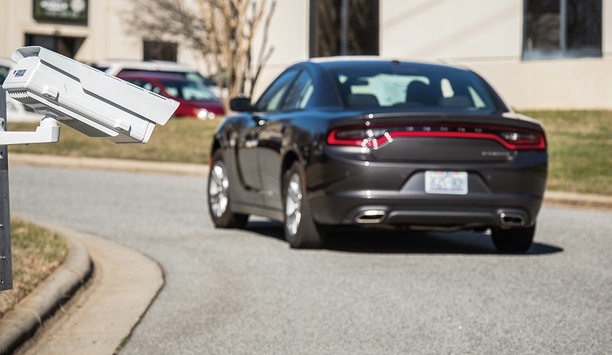
How plate reader technology increases your perimeter security
Download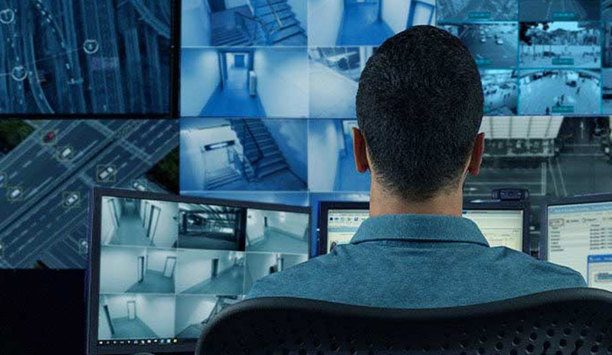
How to overcome the storage challenges of adopting surveillance AI
Download
Improving city mobility using connected video technology
Download
Monitoring traffic flow: Everywhere, all the time
Download
How plate reader technology increases your perimeter security
Download
How to overcome the storage challenges of adopting surveillance AI
Download
Improving city mobility using connected video technology
Download
Monitoring traffic flow: Everywhere, all the time
Download
How plate reader technology increases your perimeter security
Download

Videos
Traffic surveillance: Manufacturers & Suppliers

Using artificial intelligence (AI) to automate physical security systems
Download
A modern guide to data loss prevention
Download
7 proven solutions for law enforcement key control and asset management
Download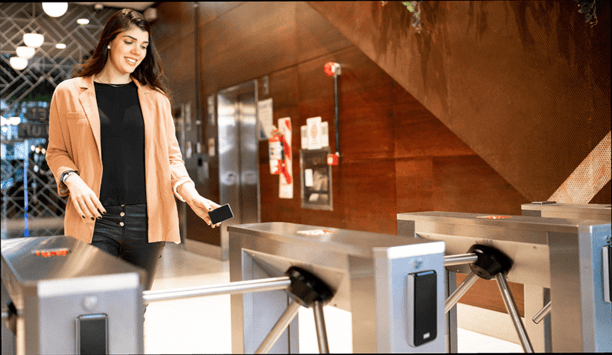
The truth behind 9 mobile access myths
Download
Access control system planning phase 2
Download












